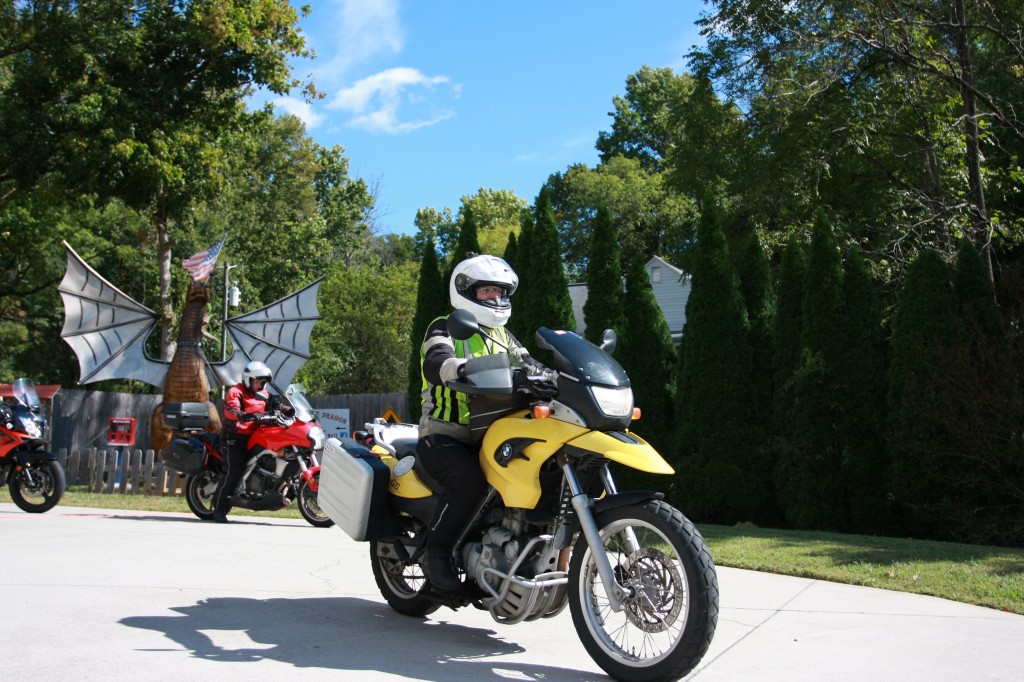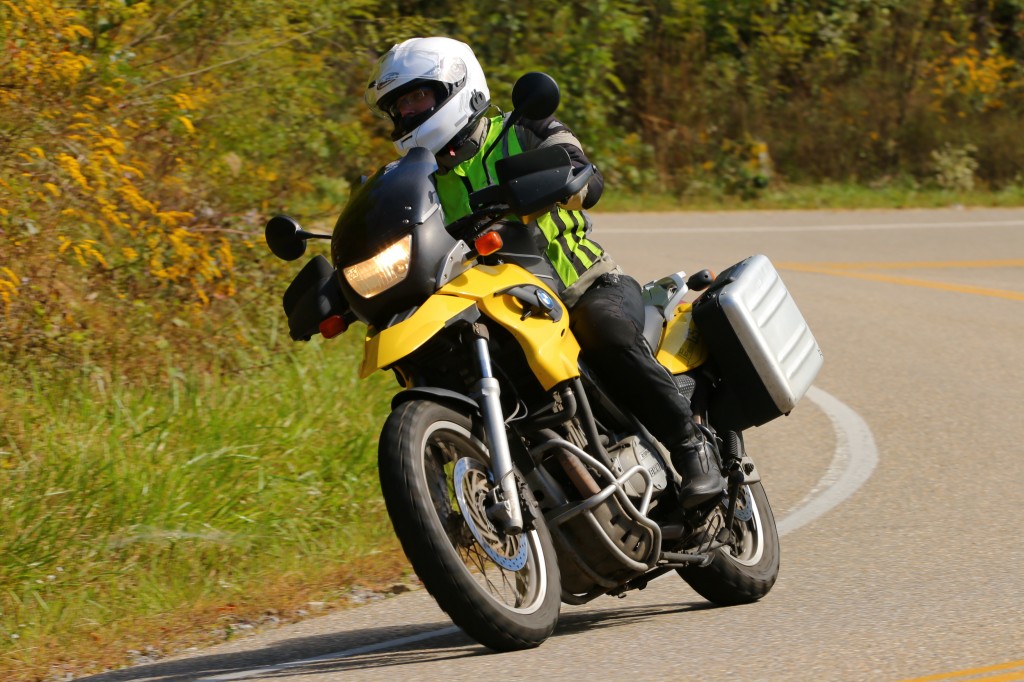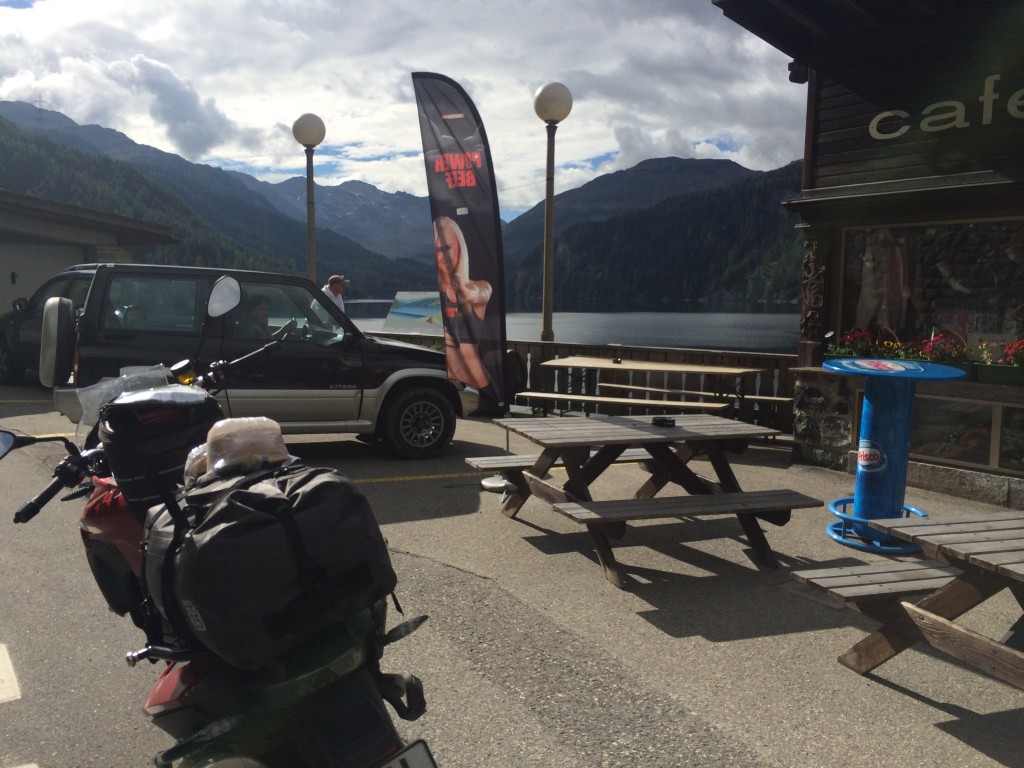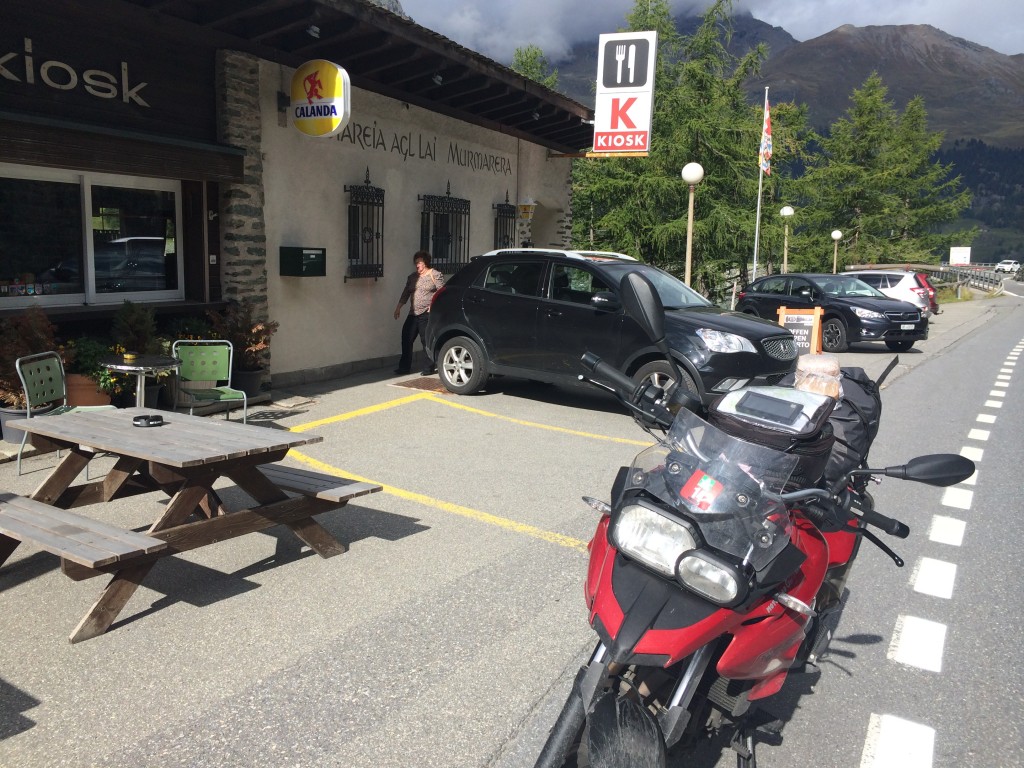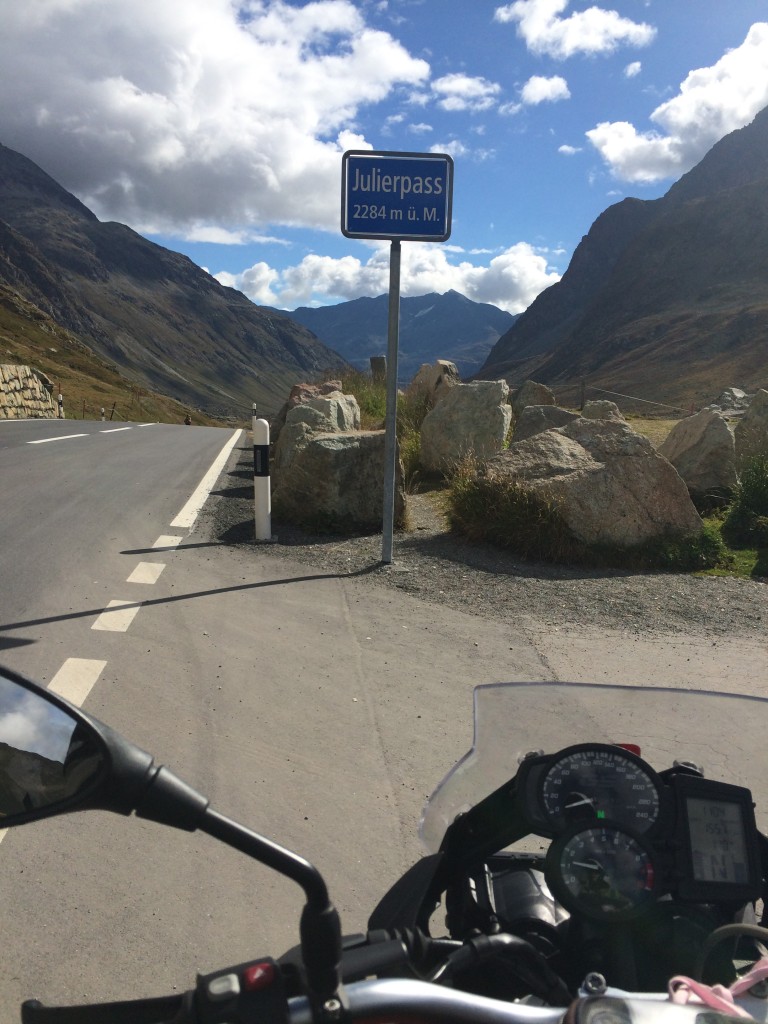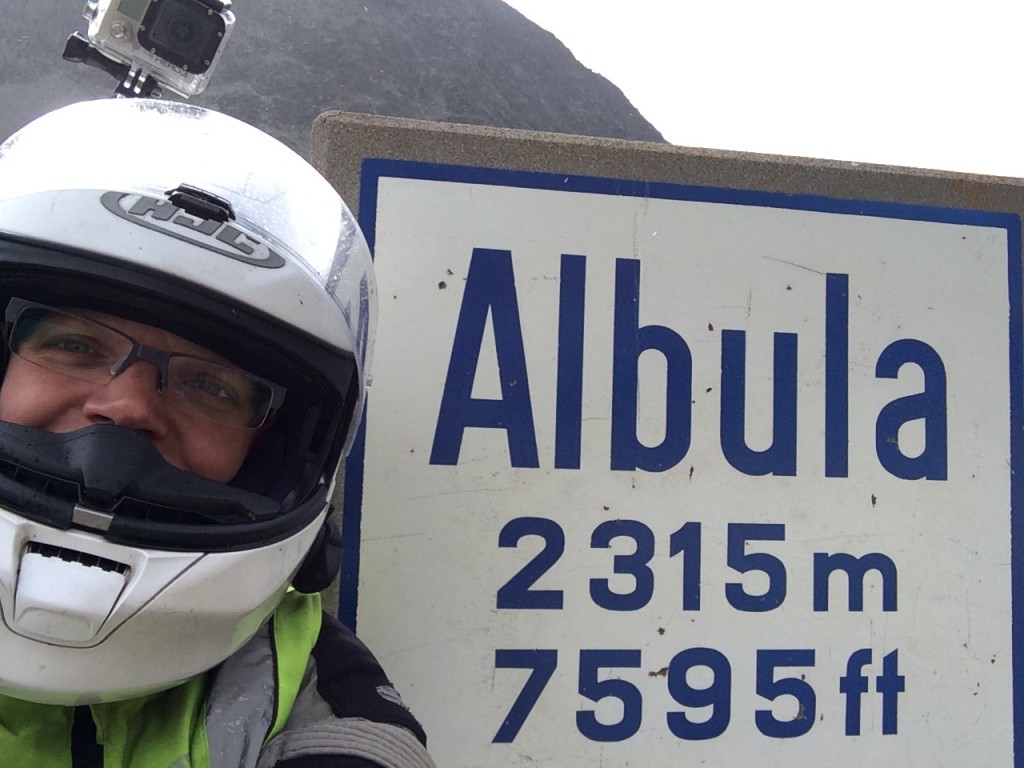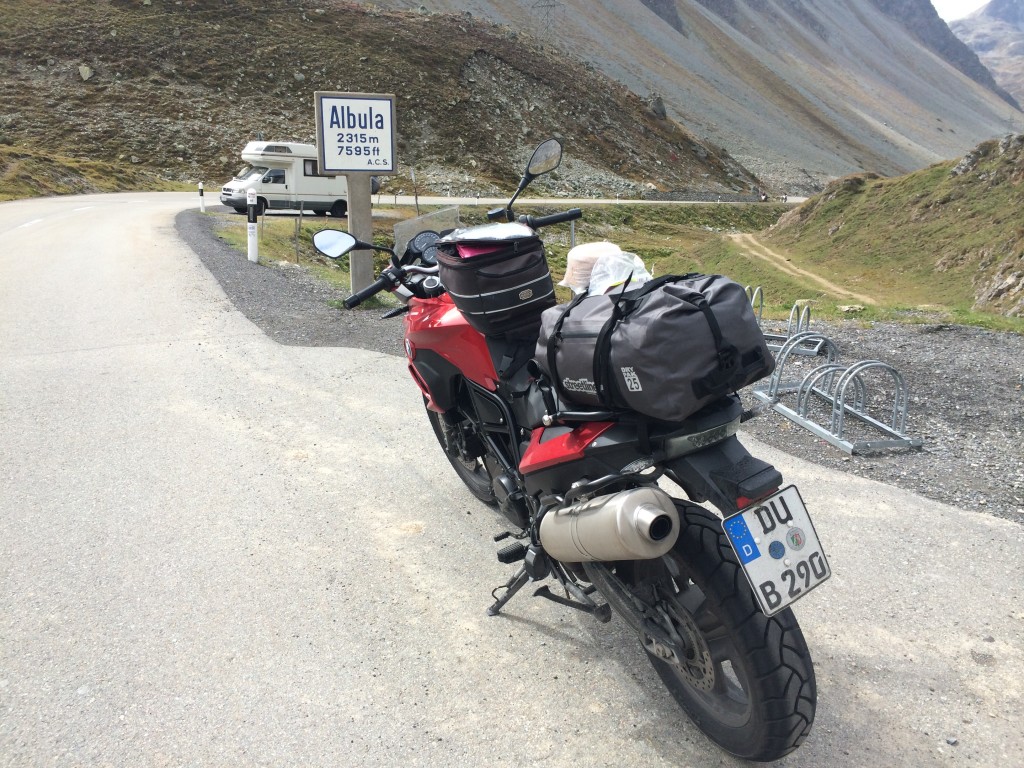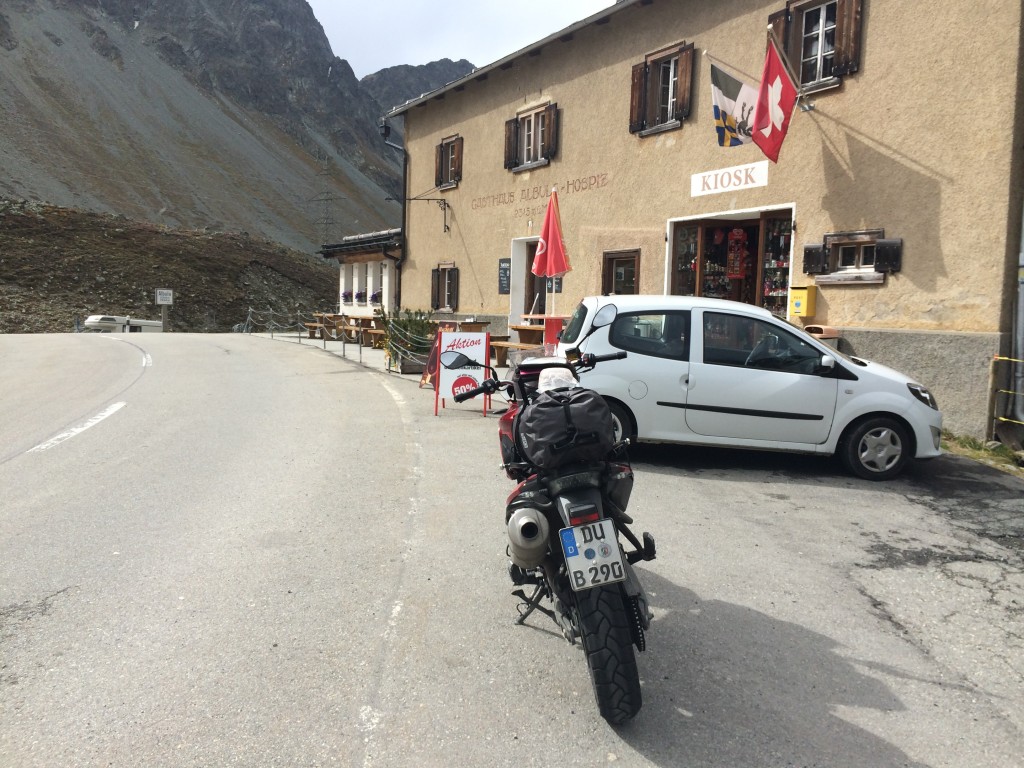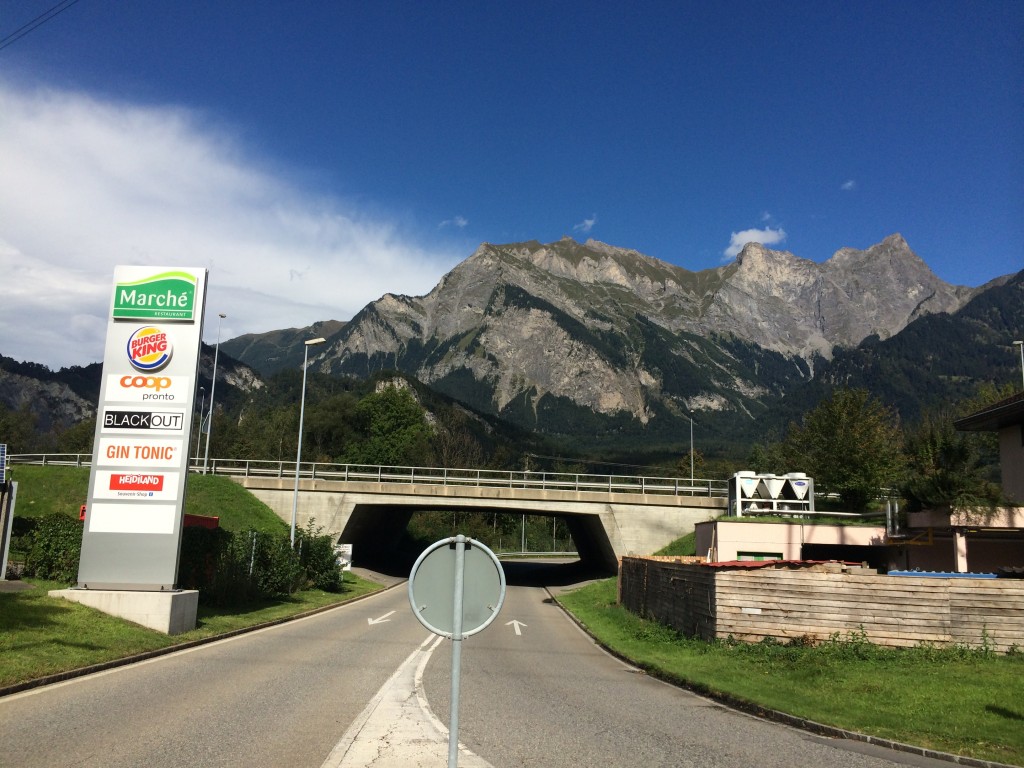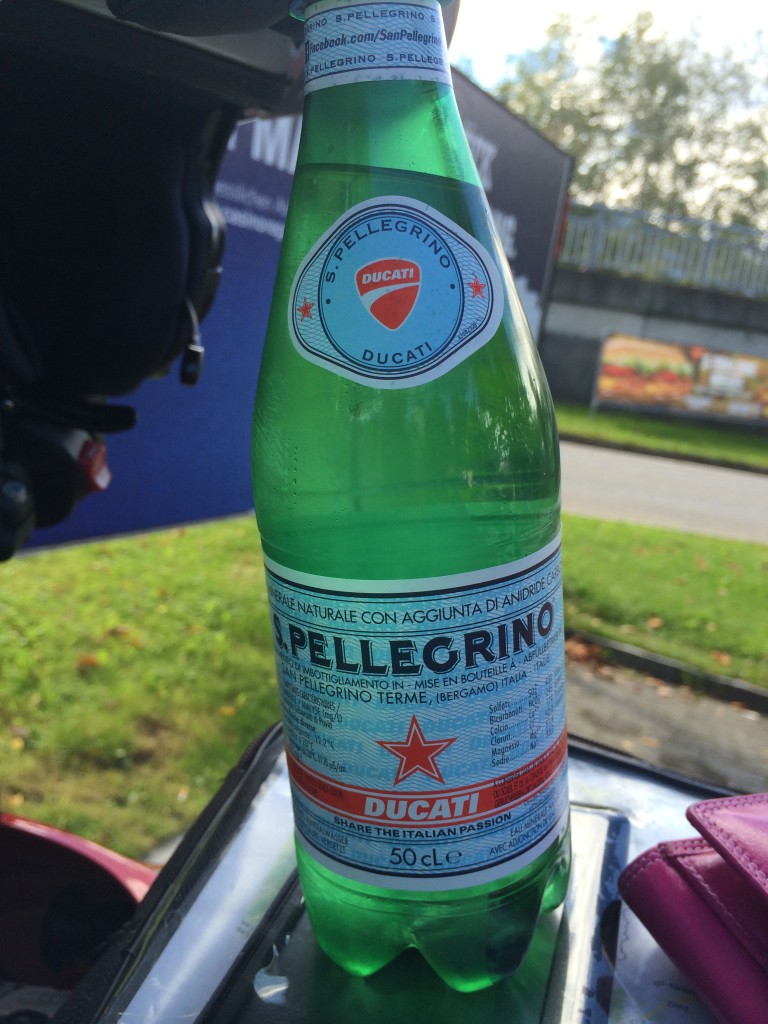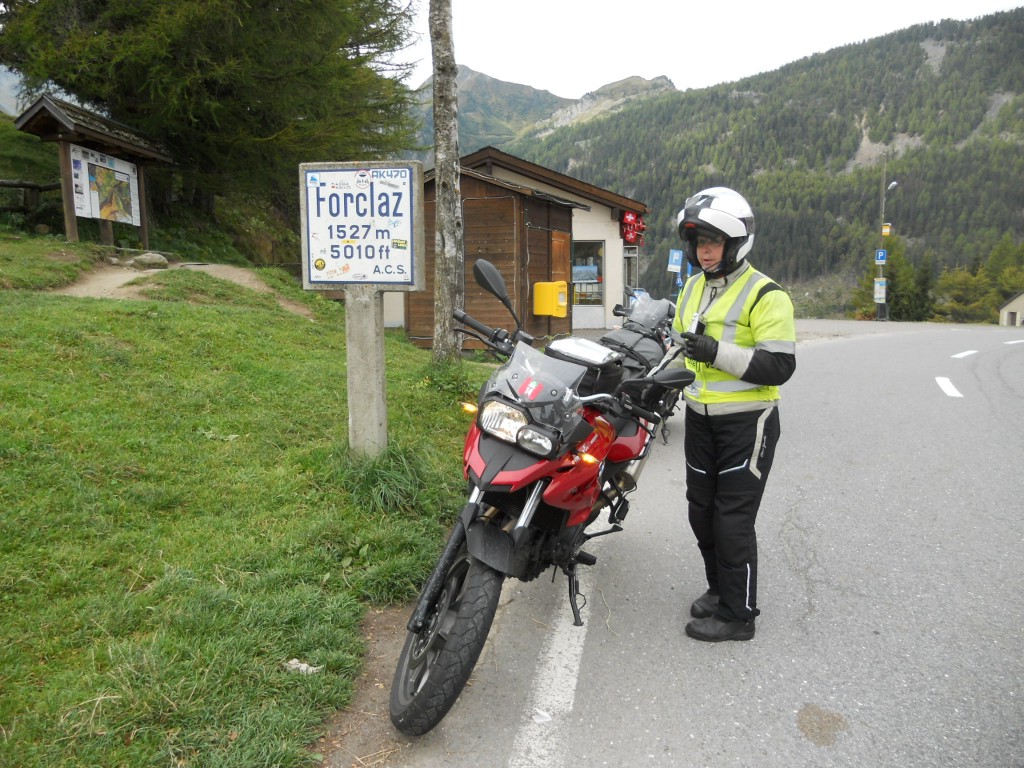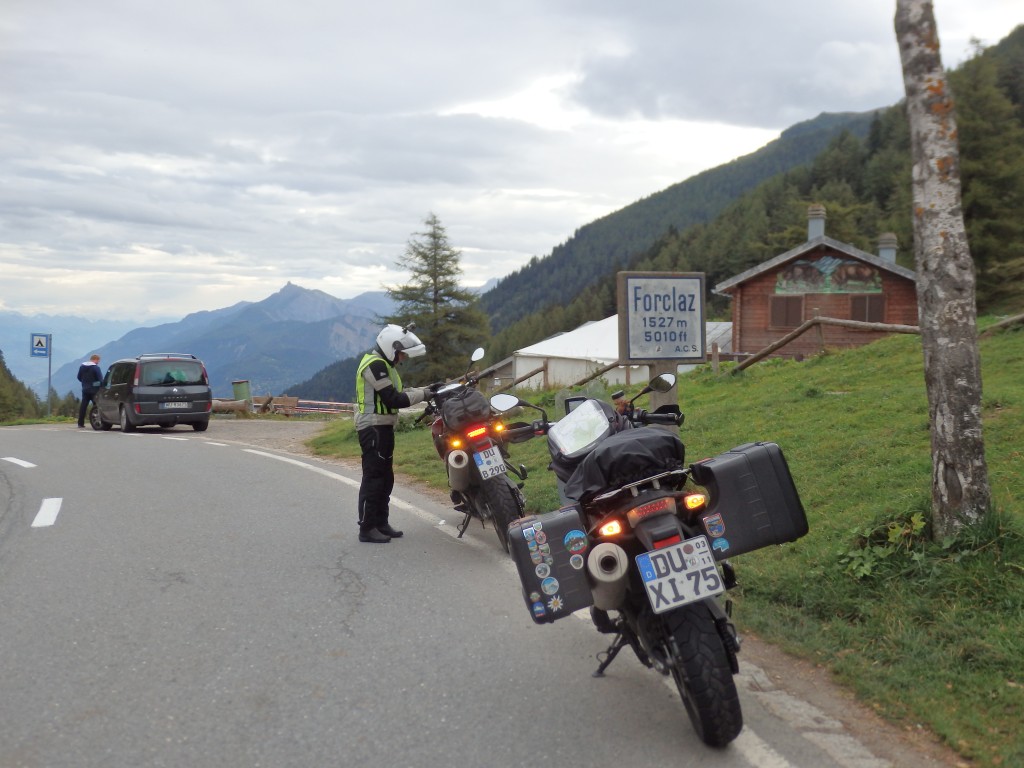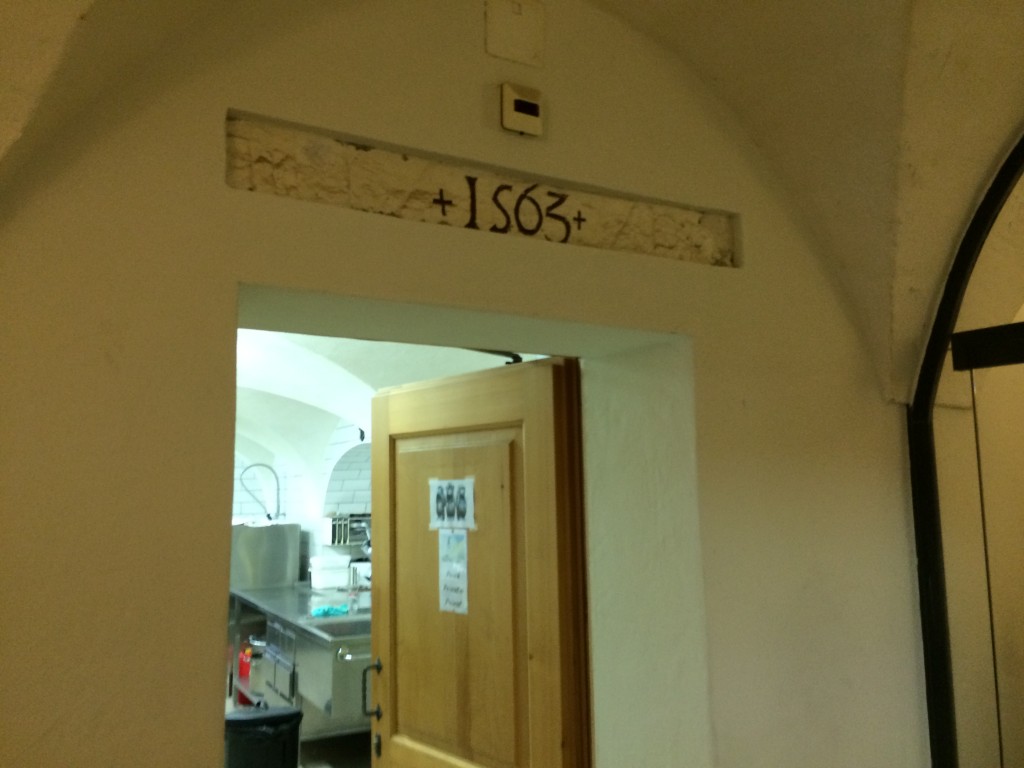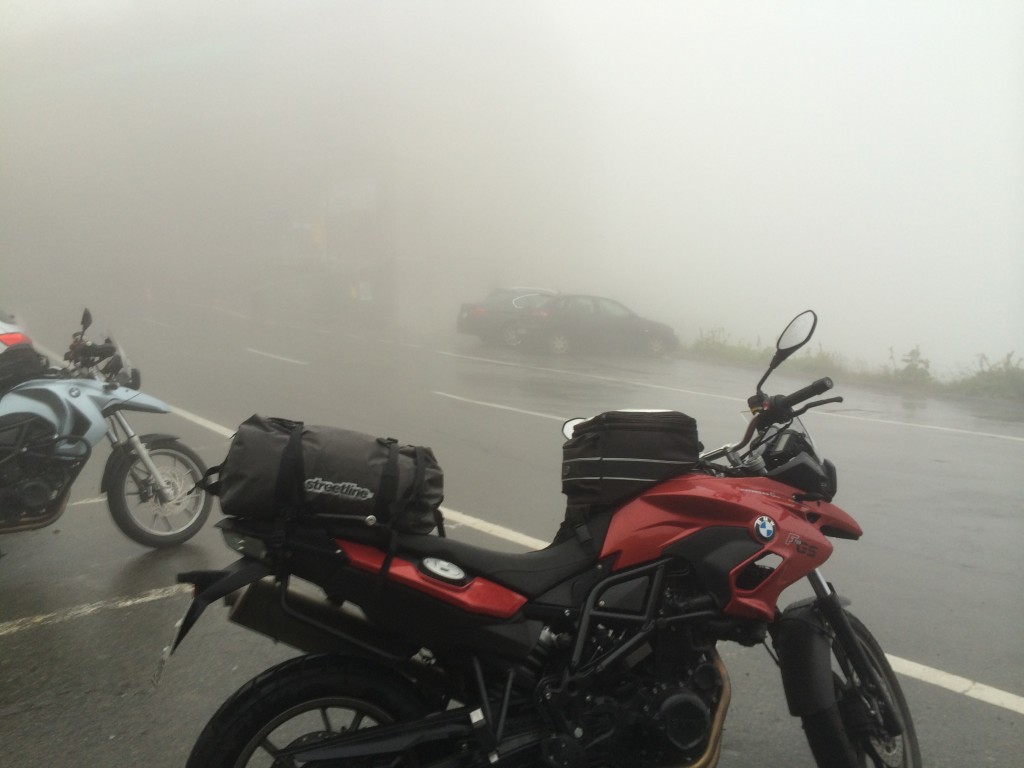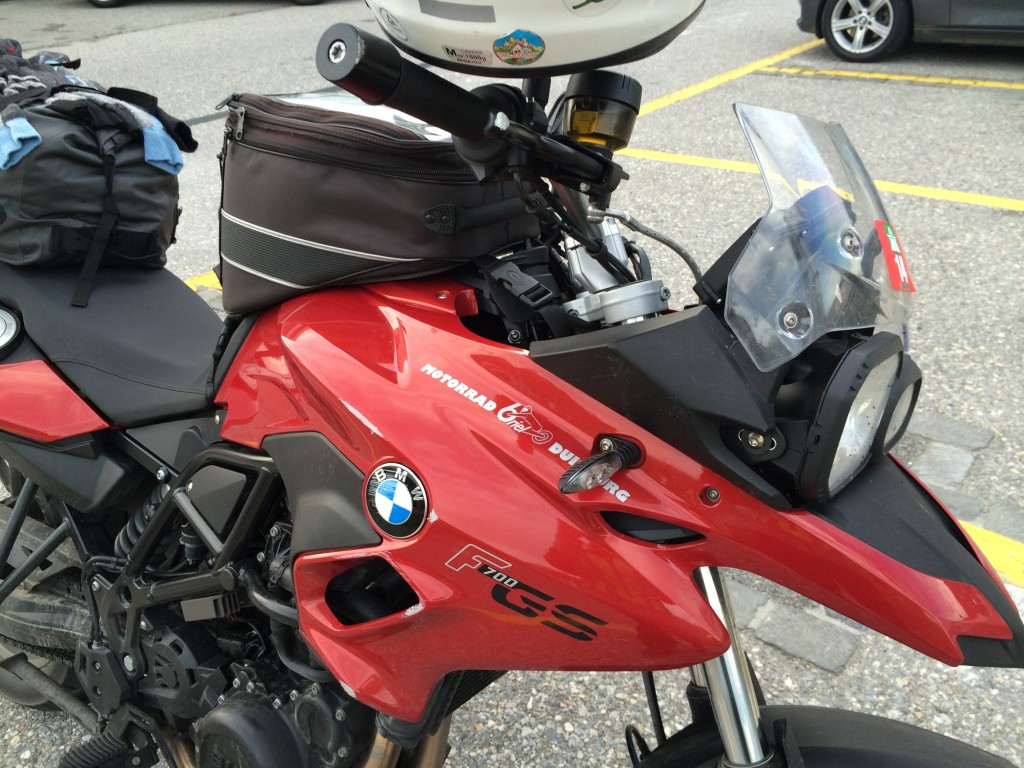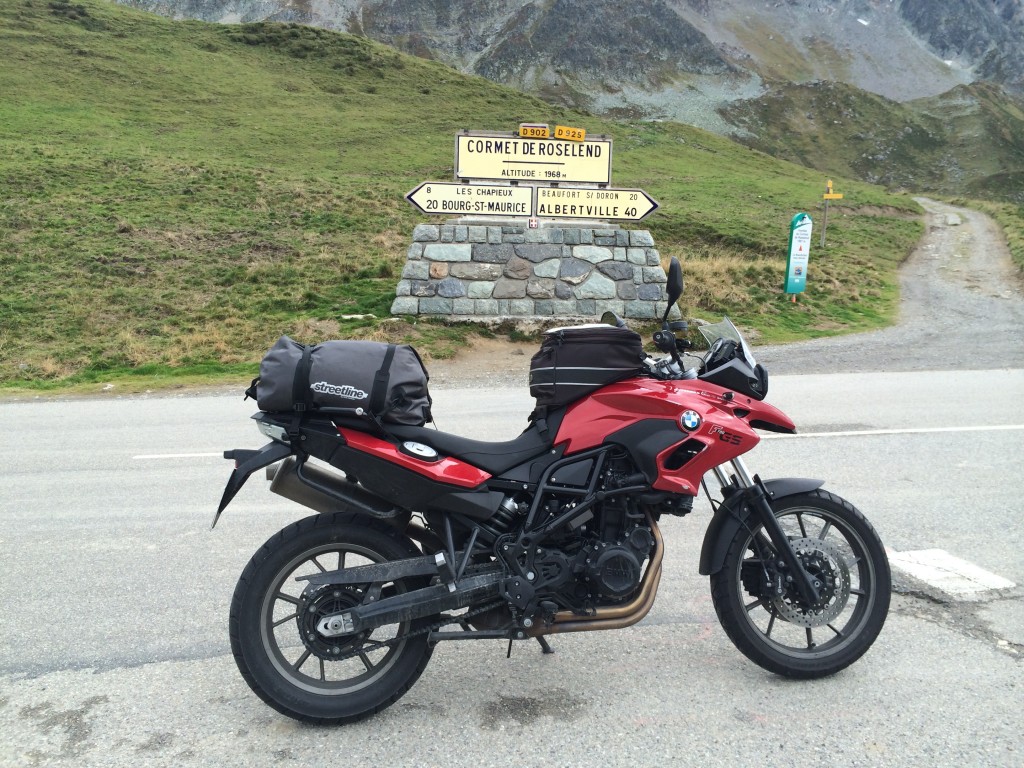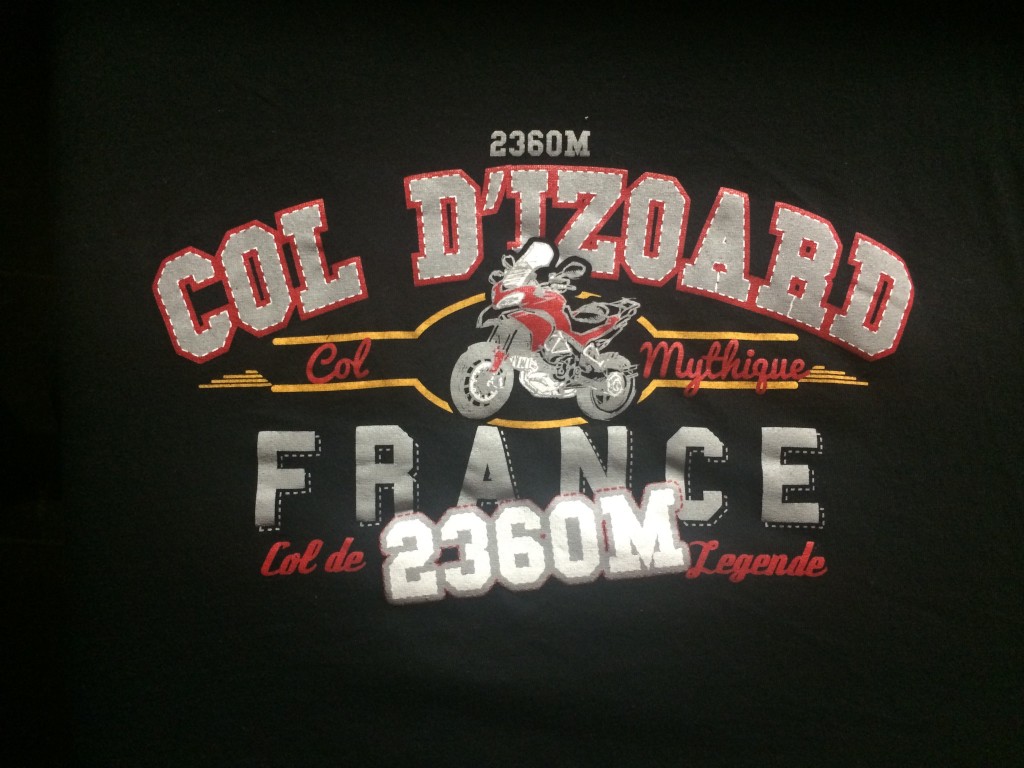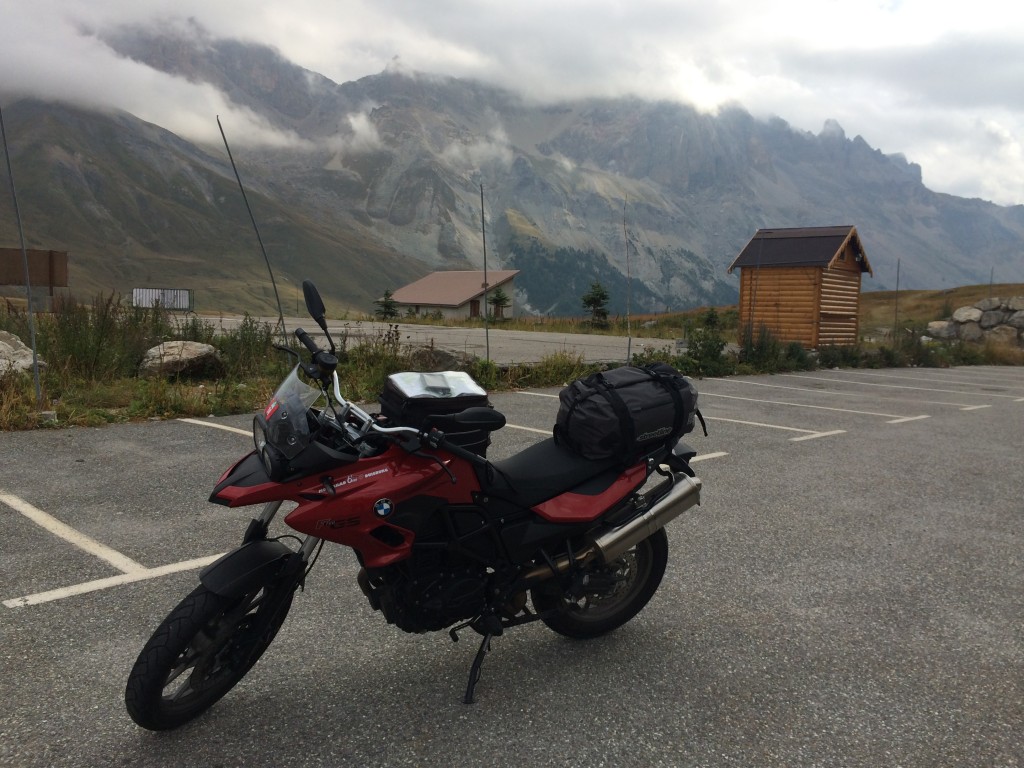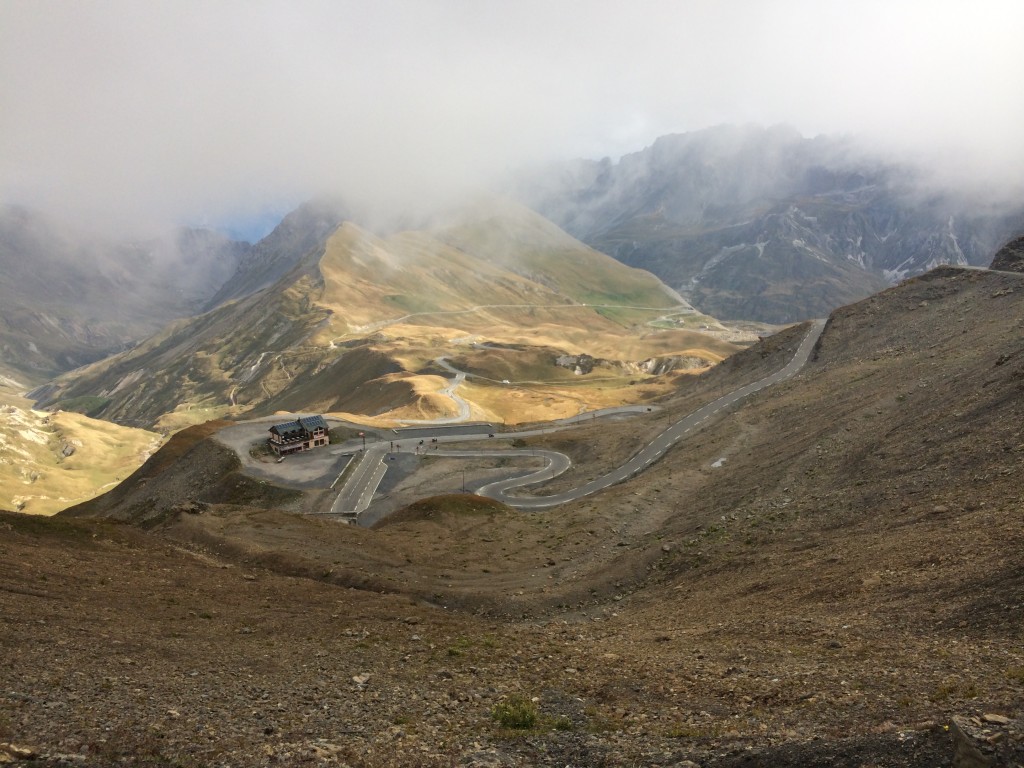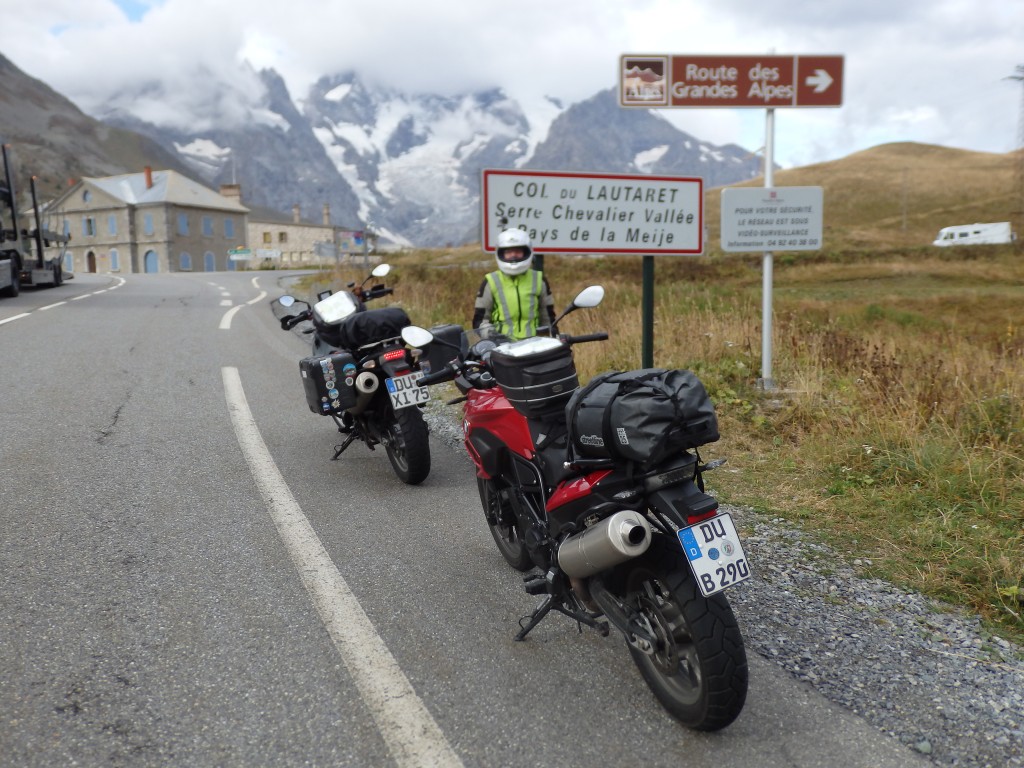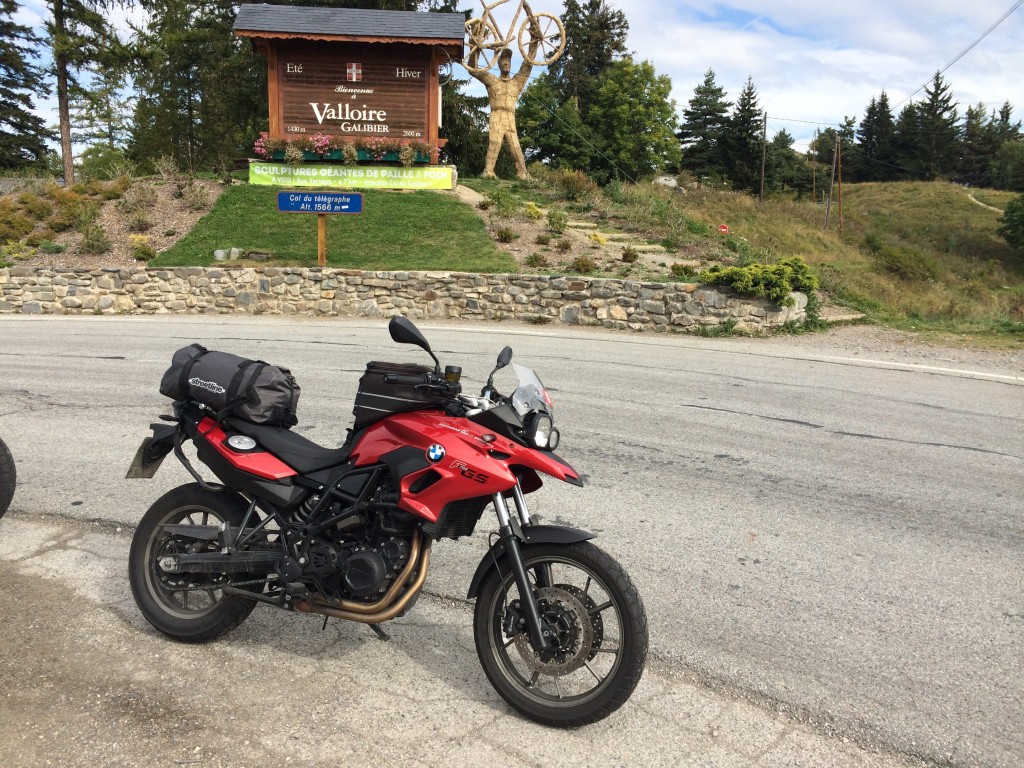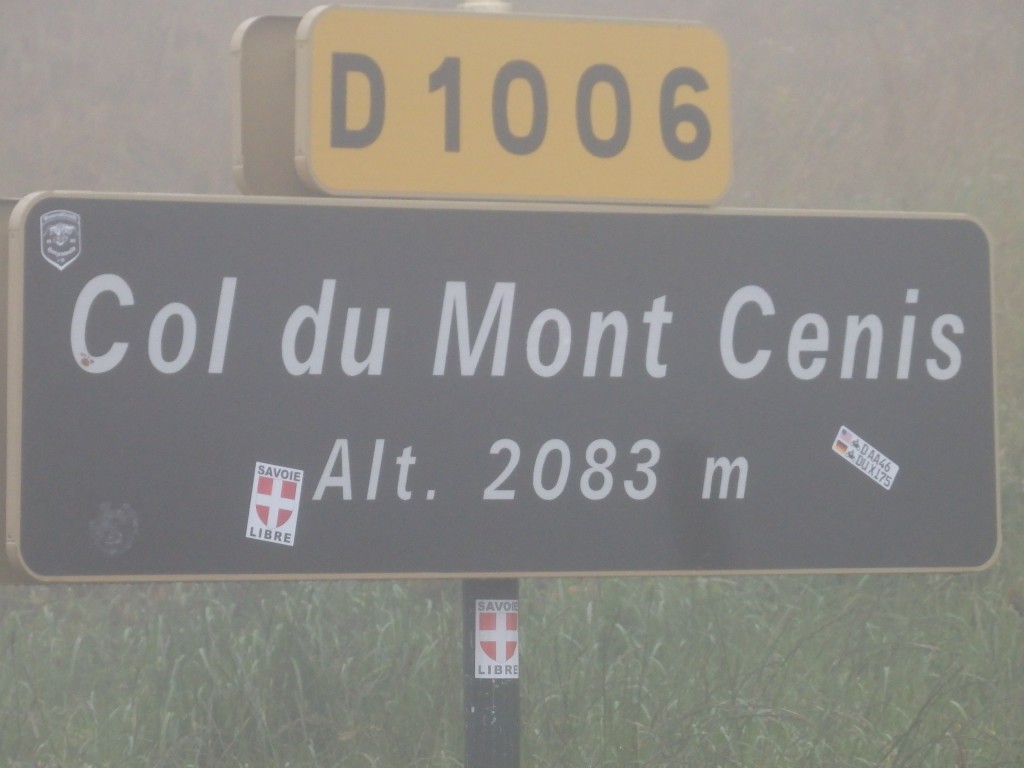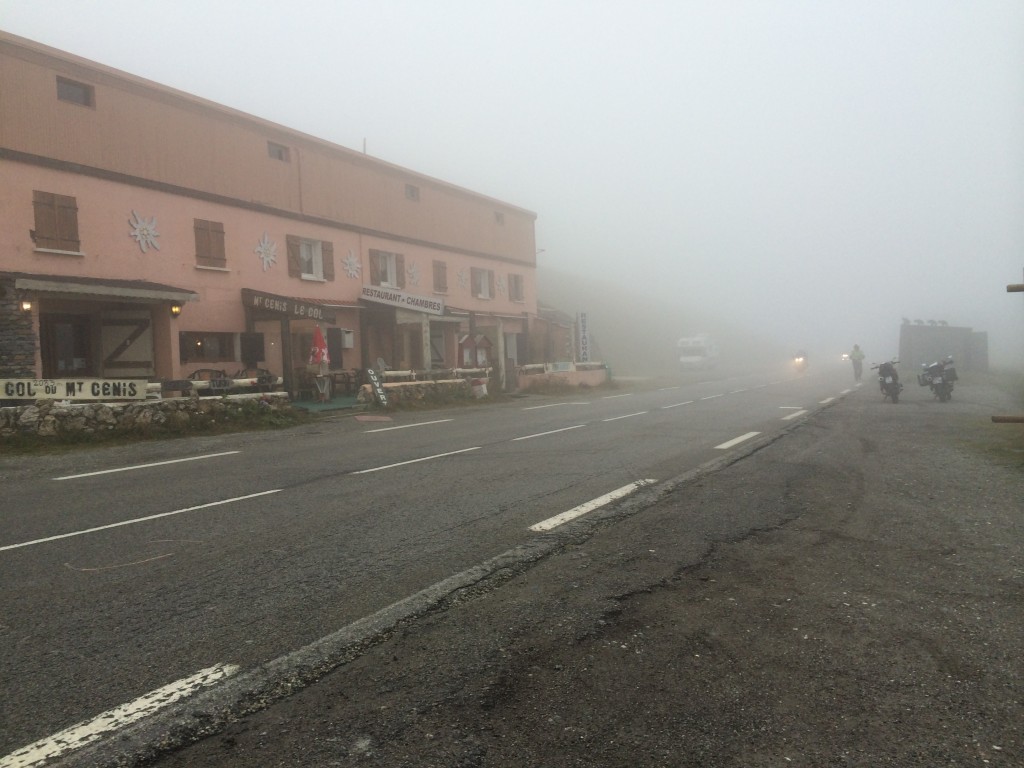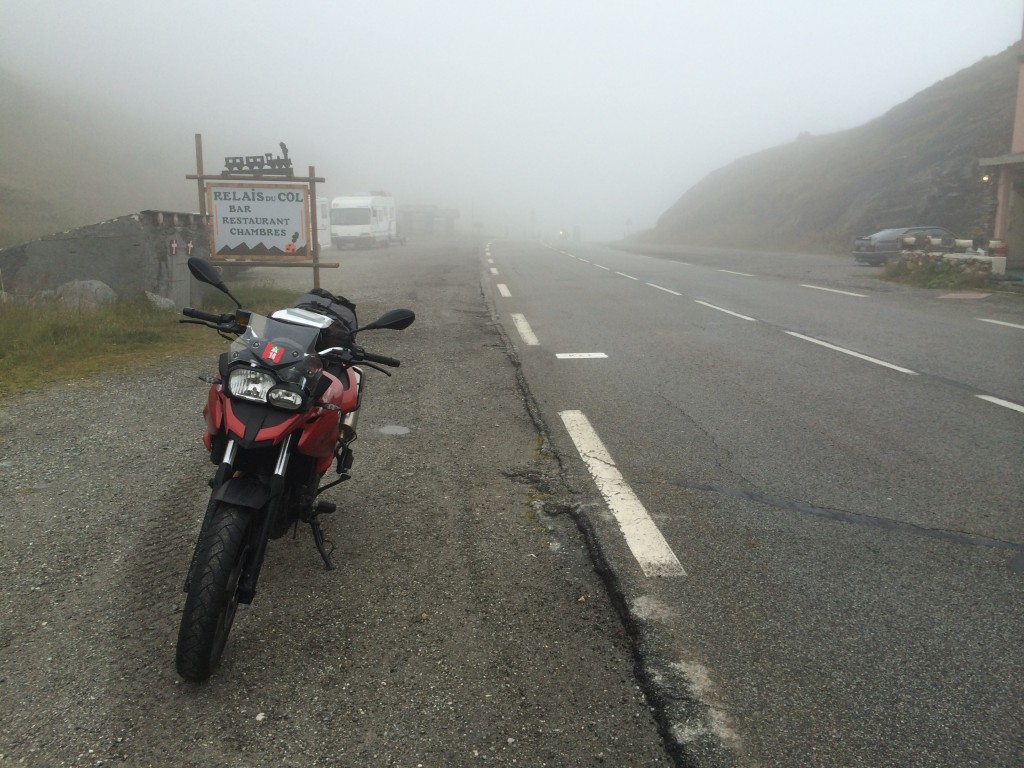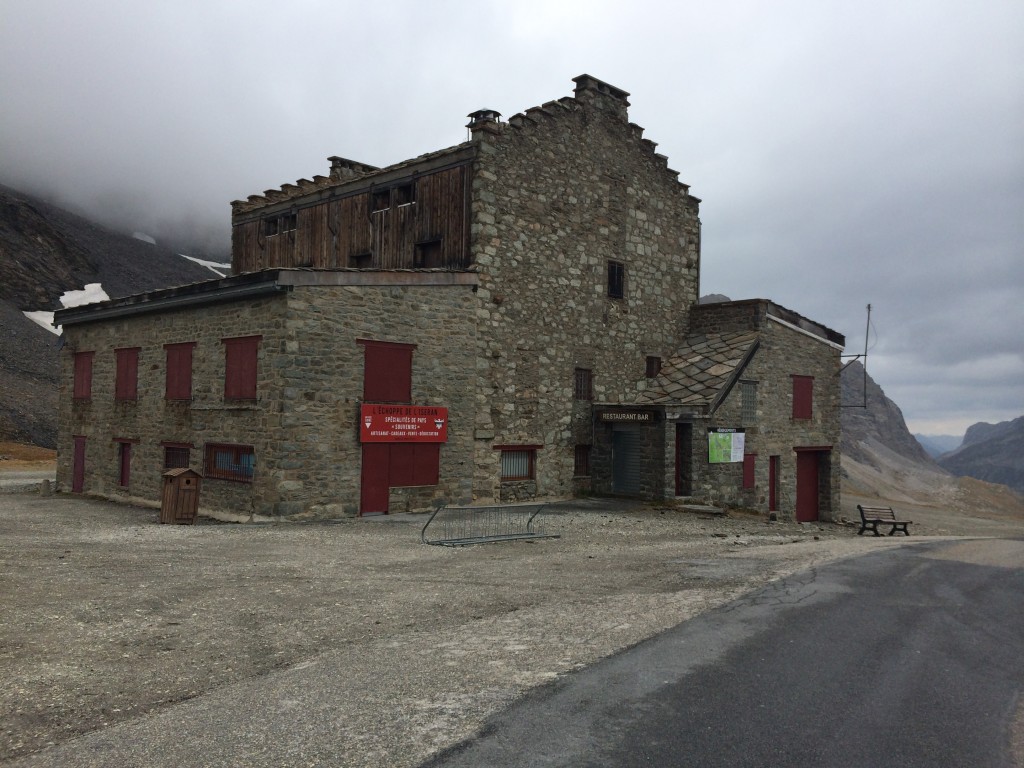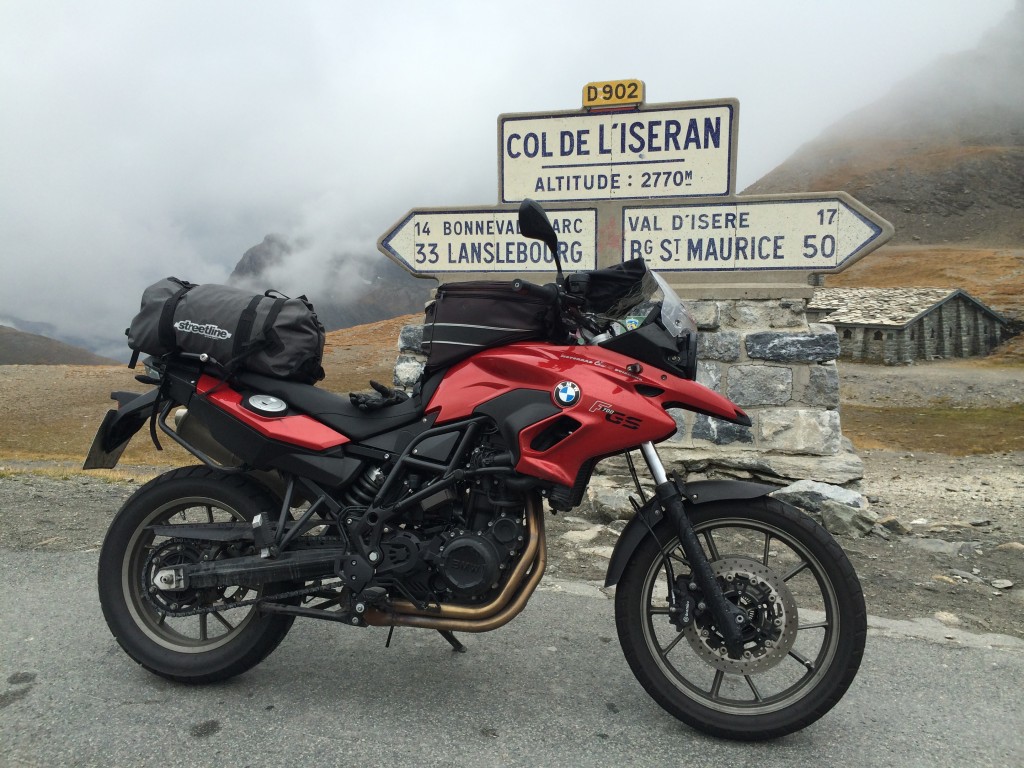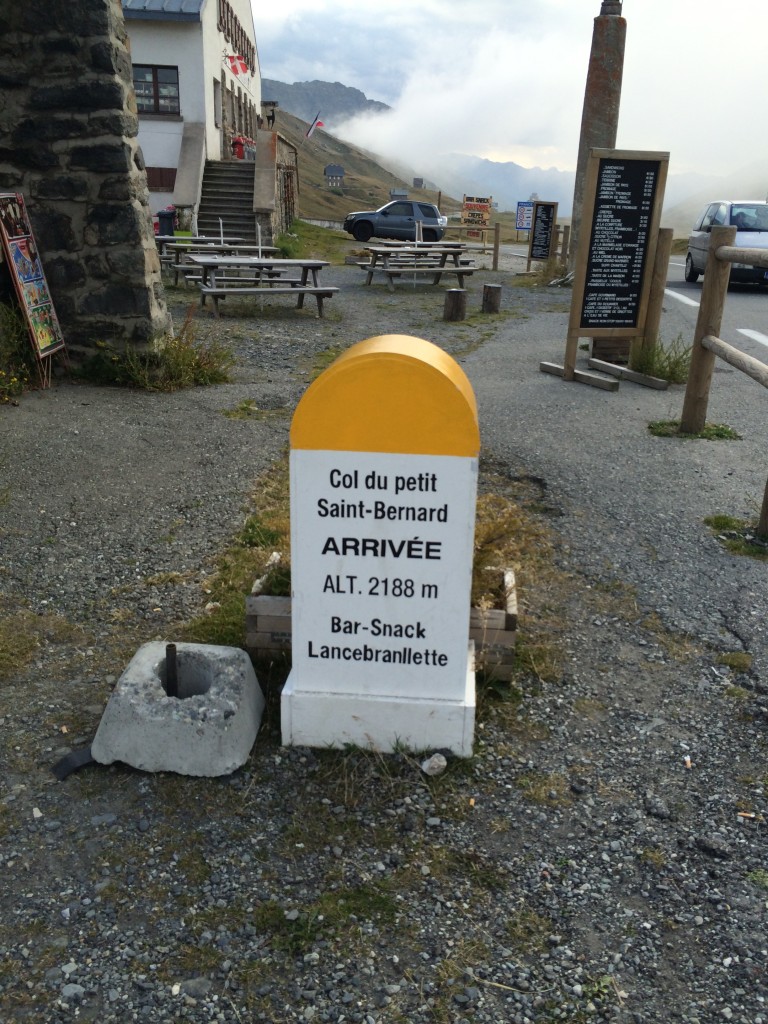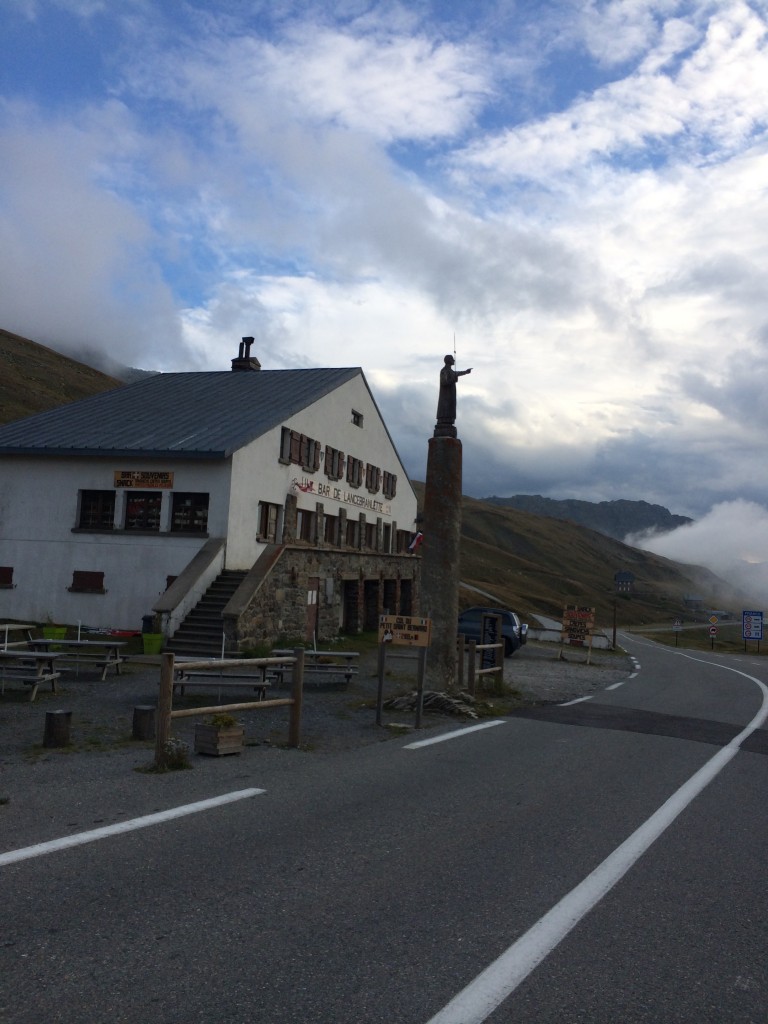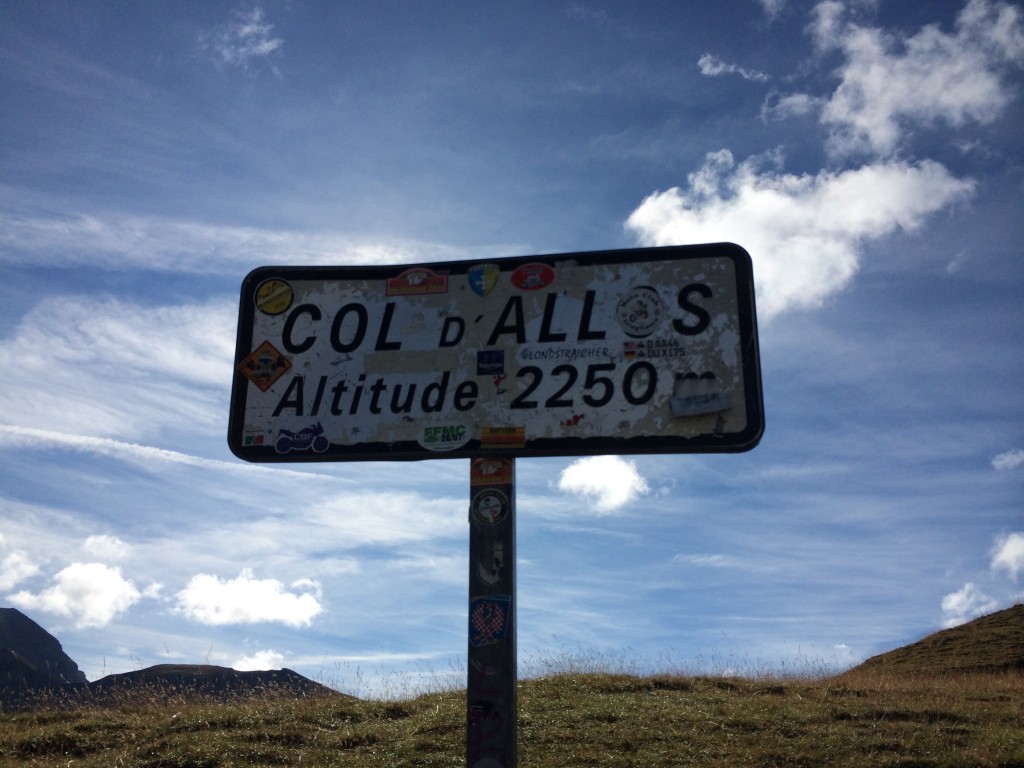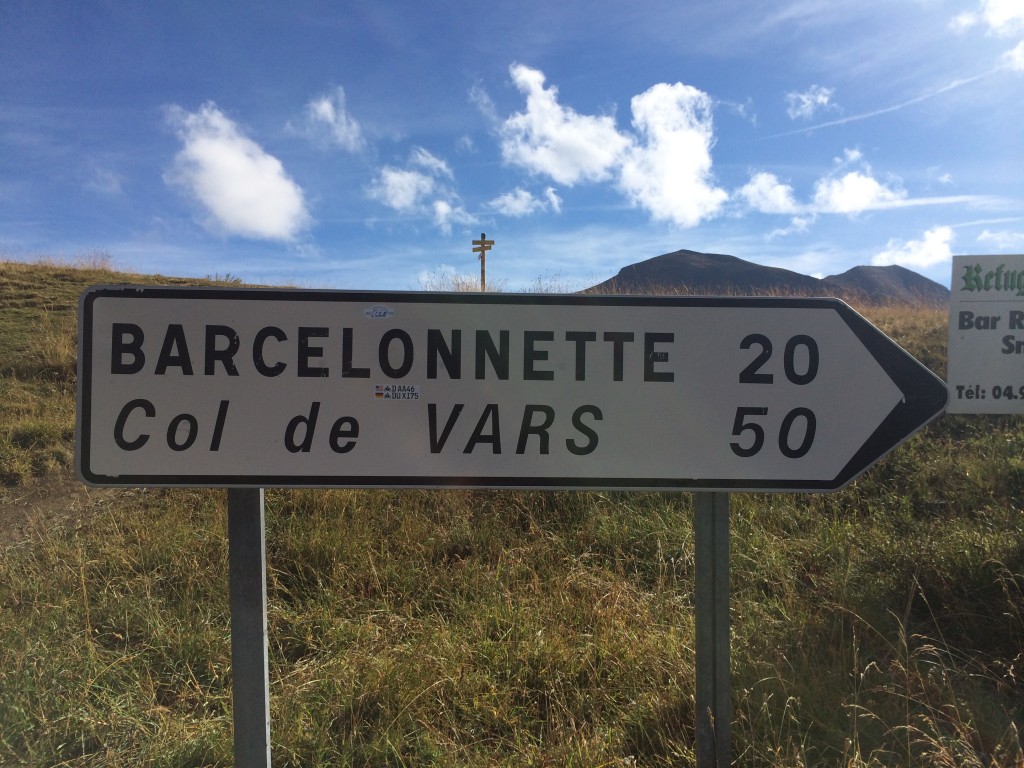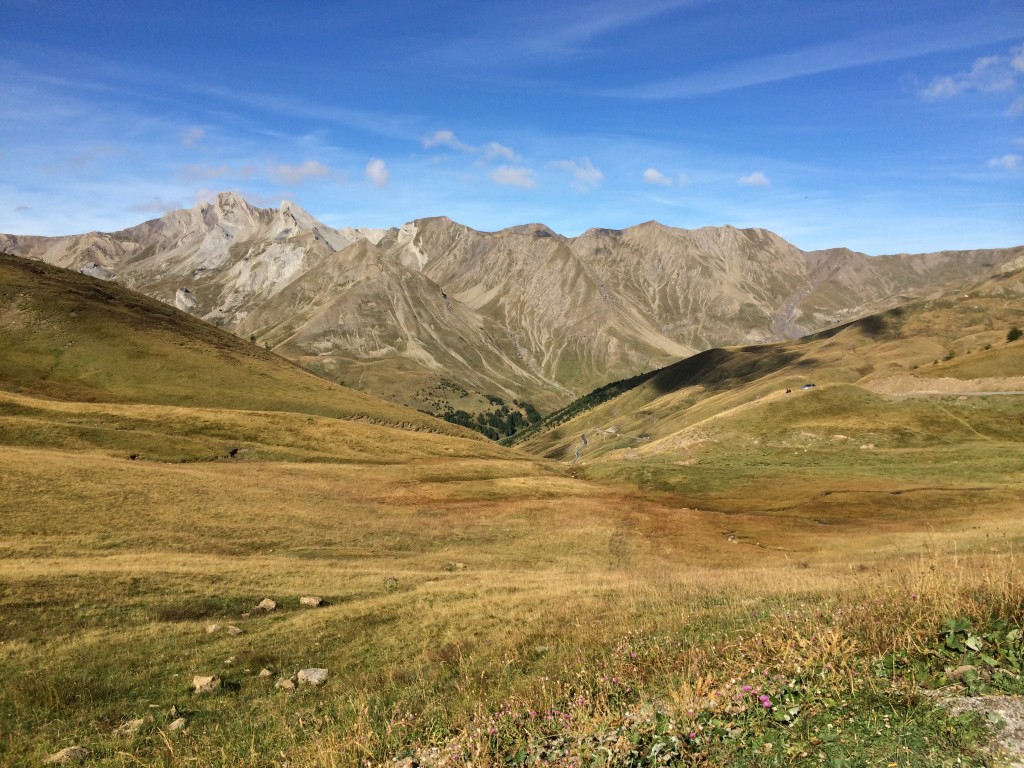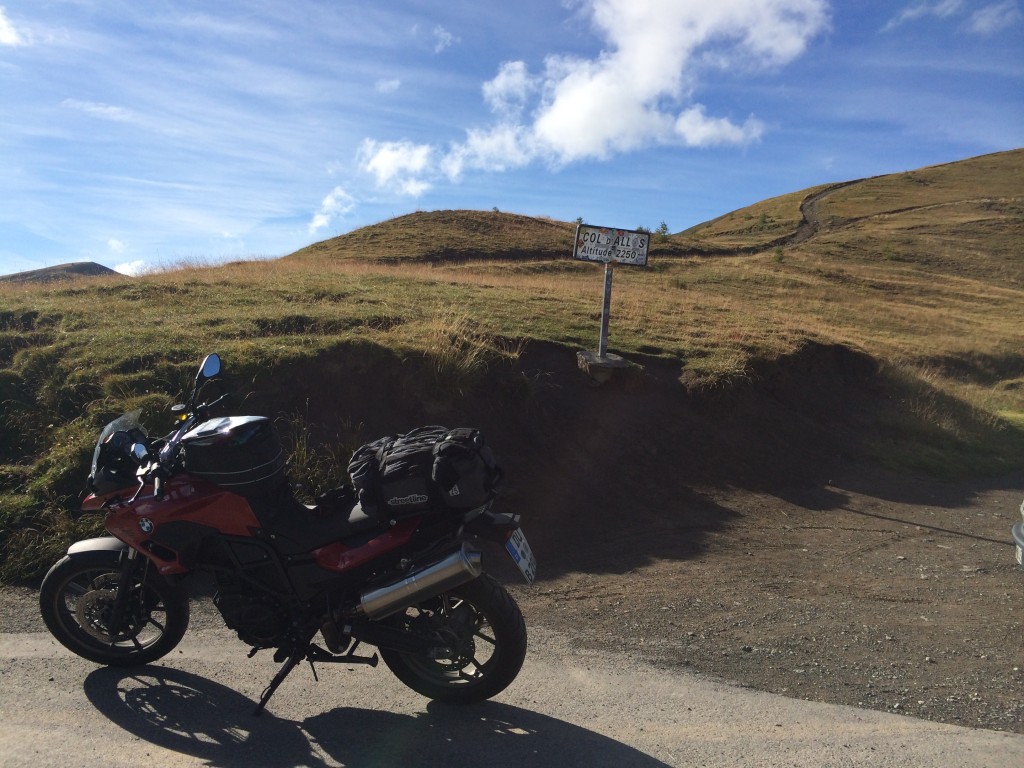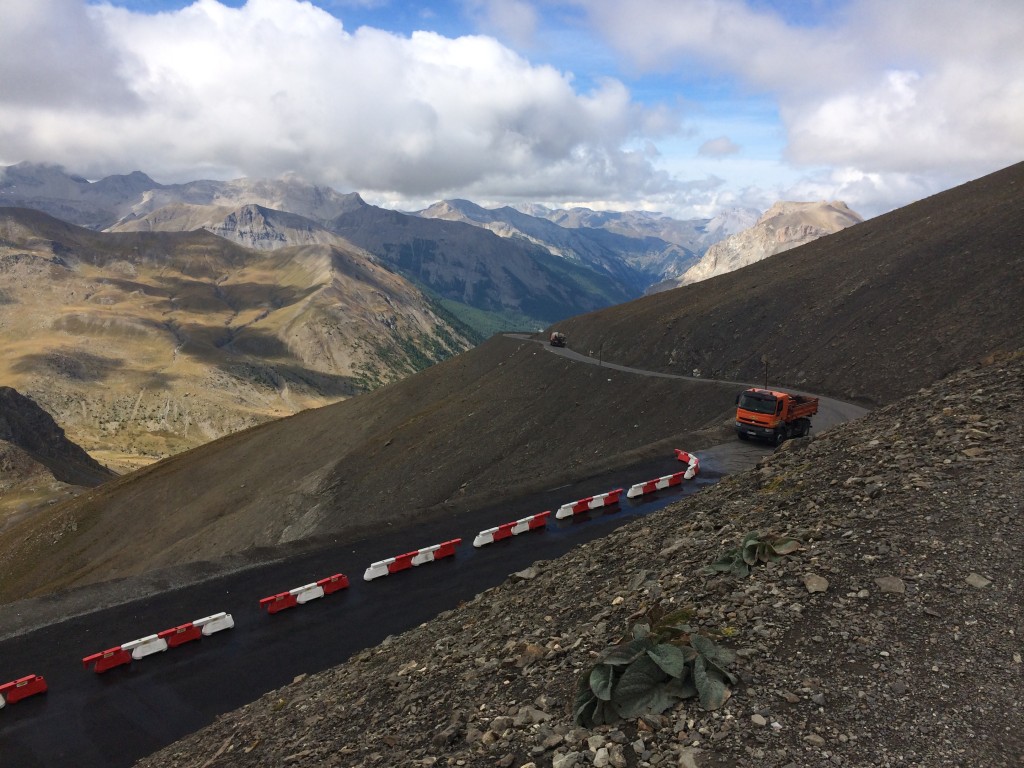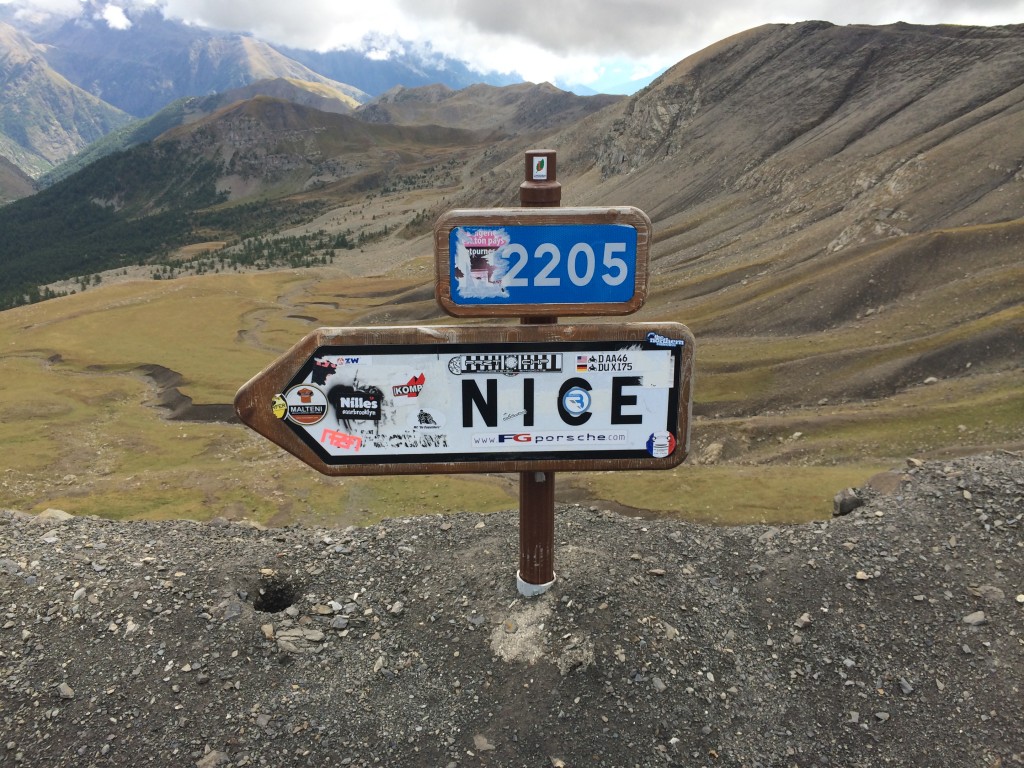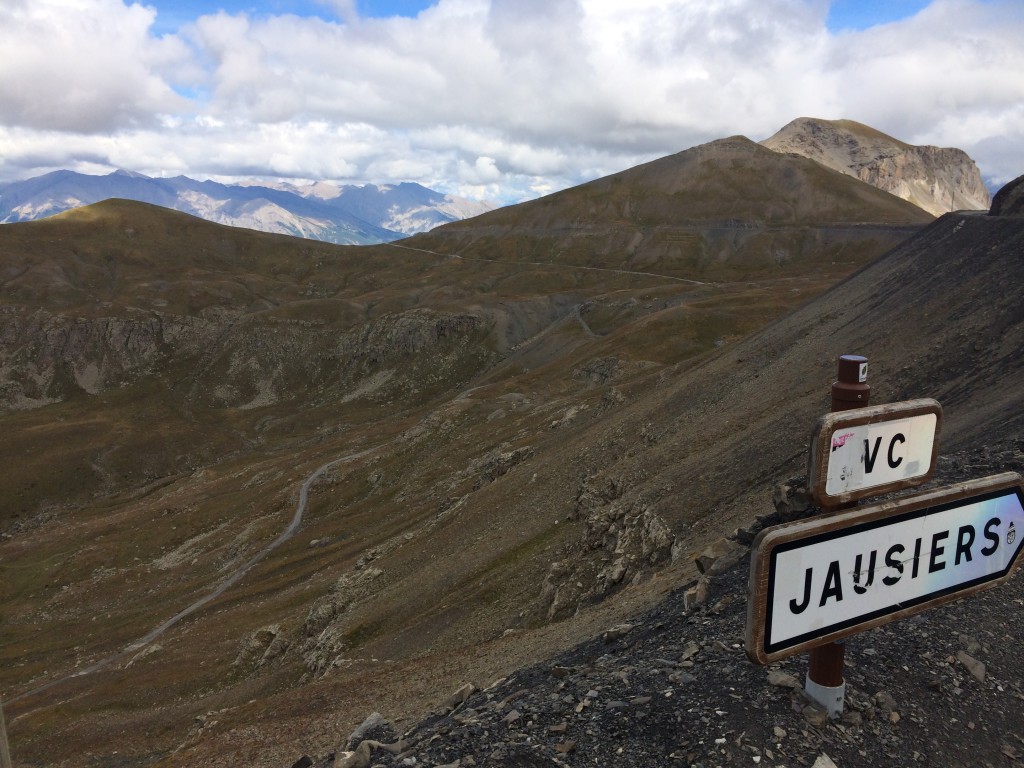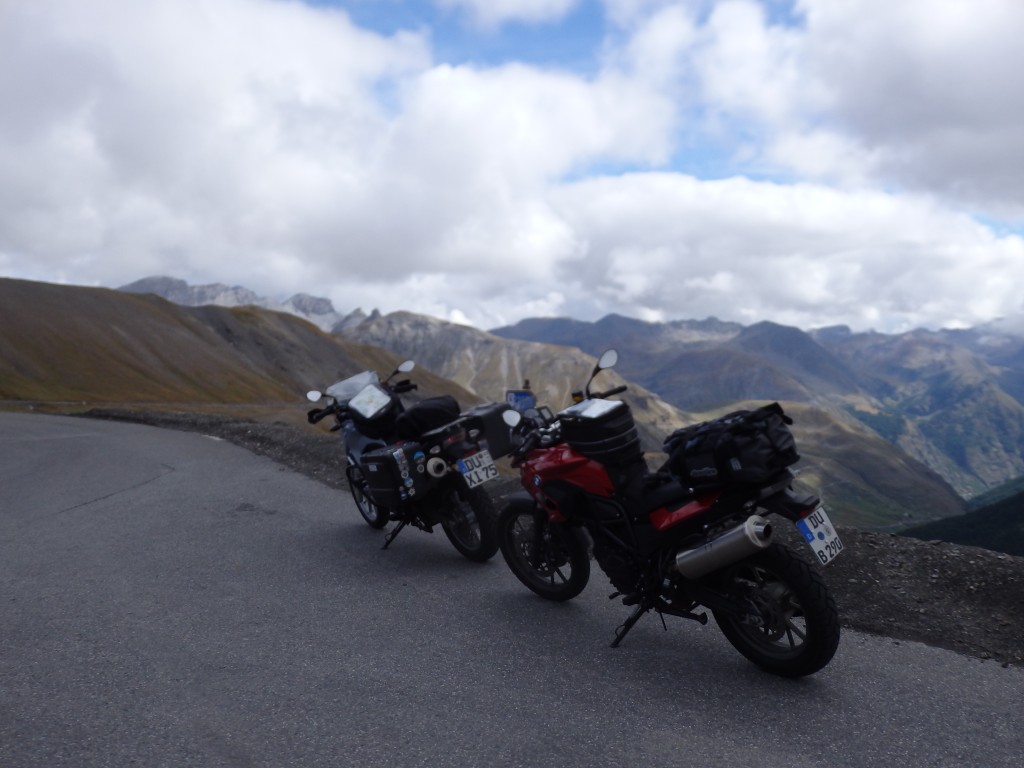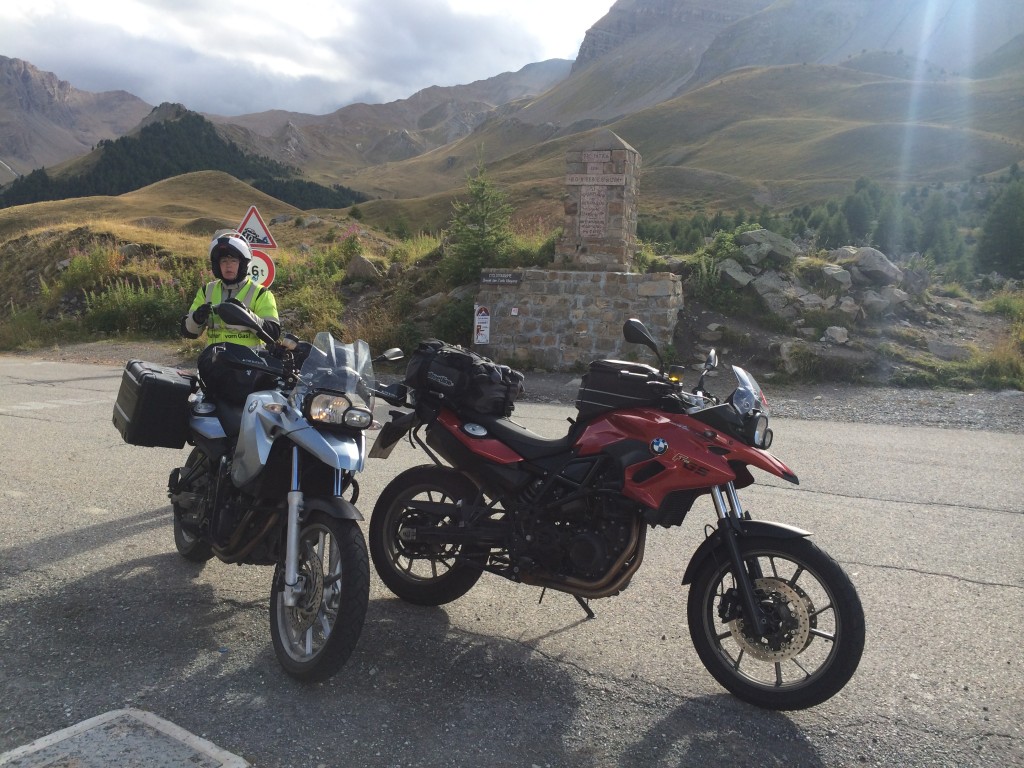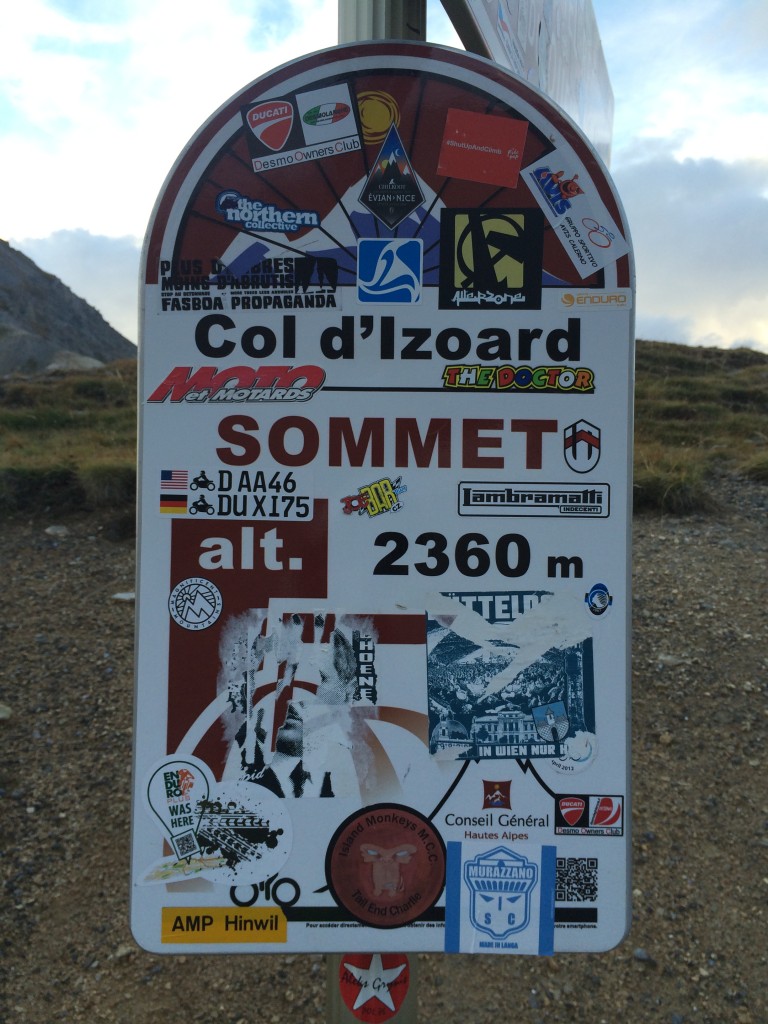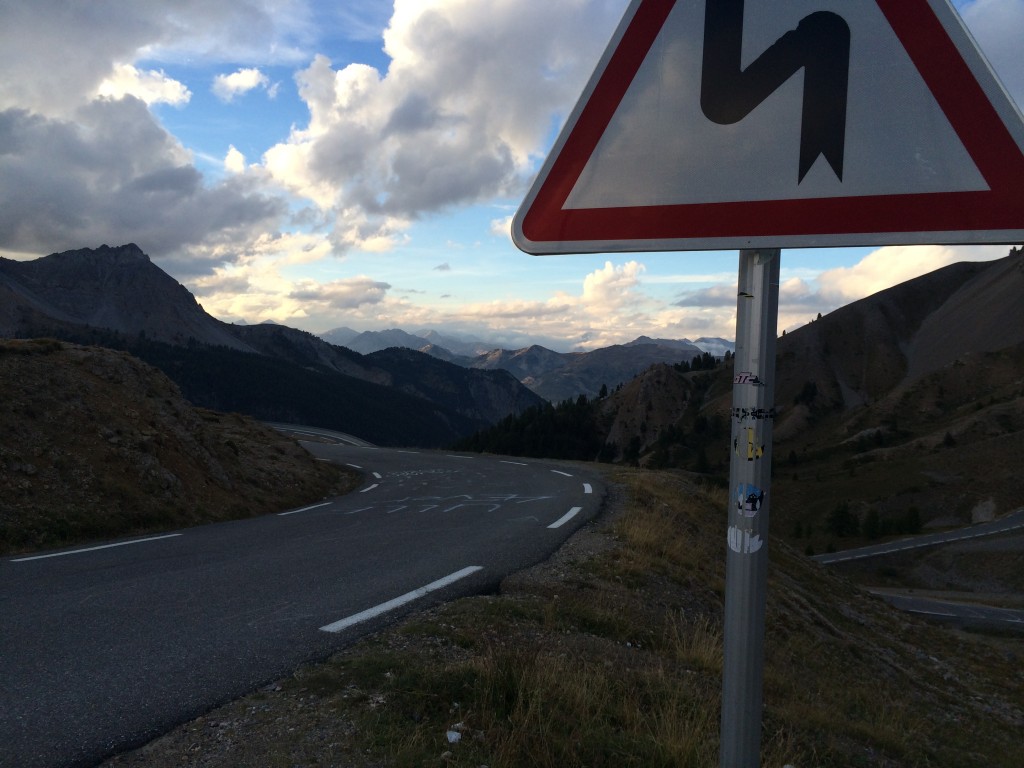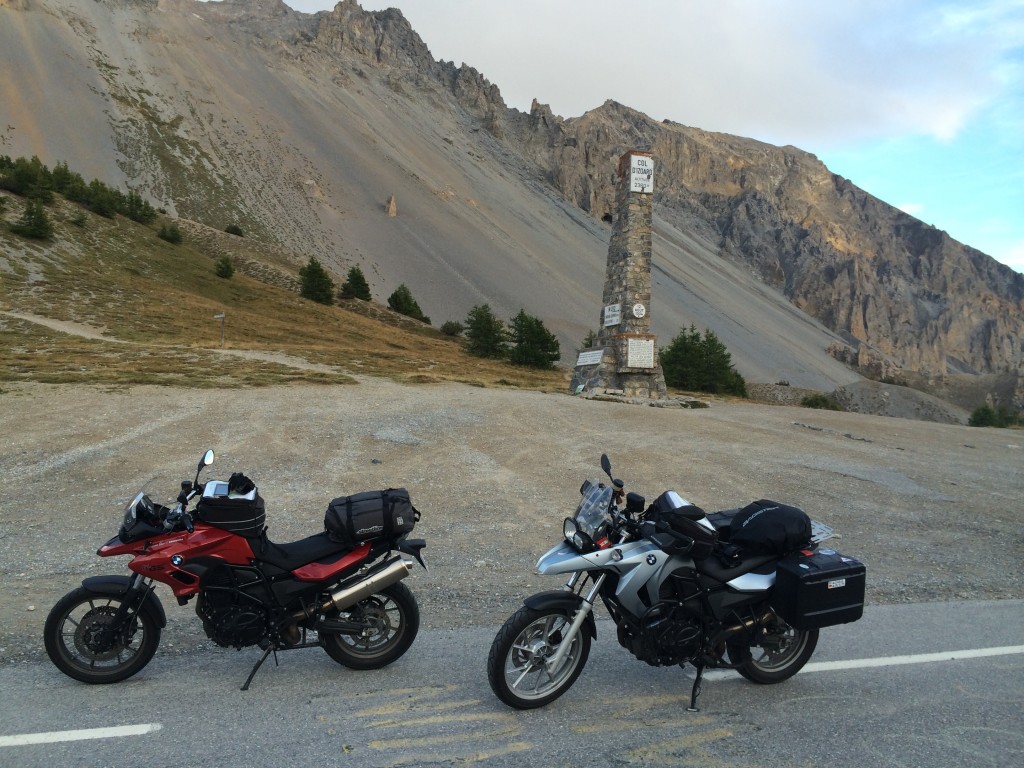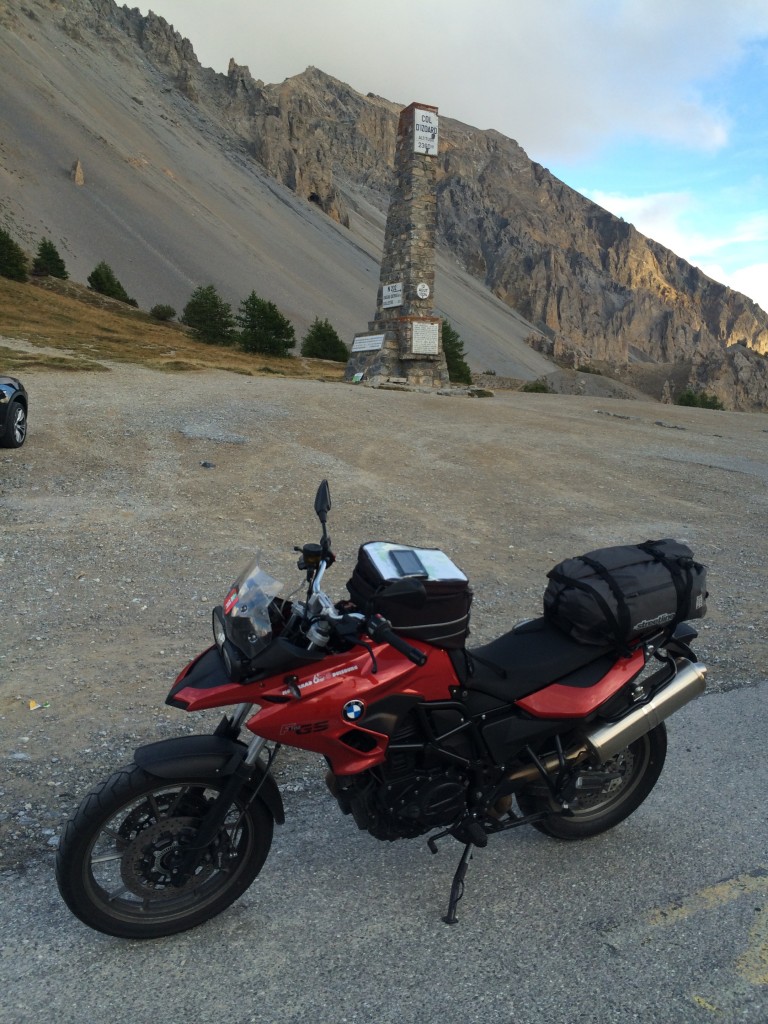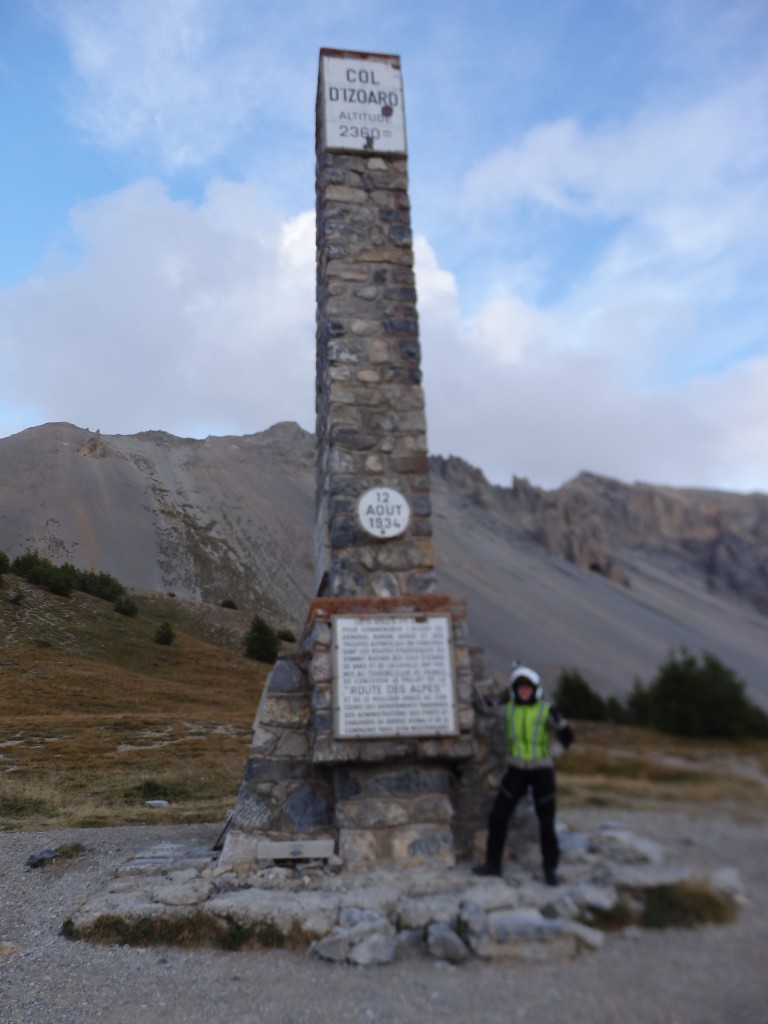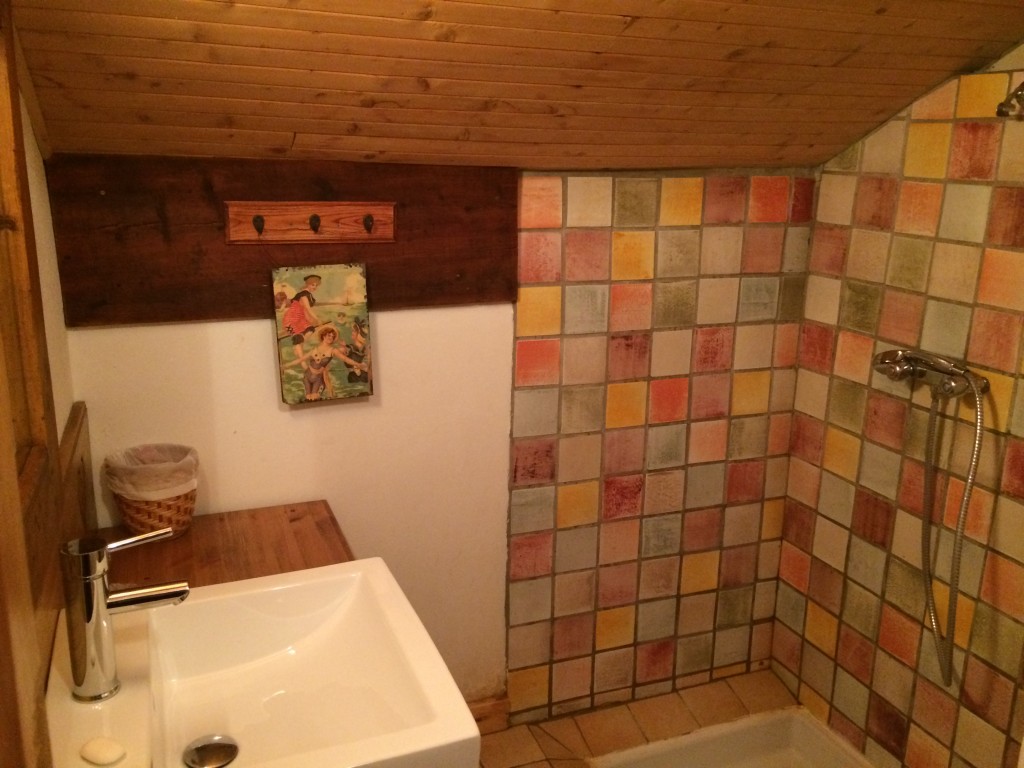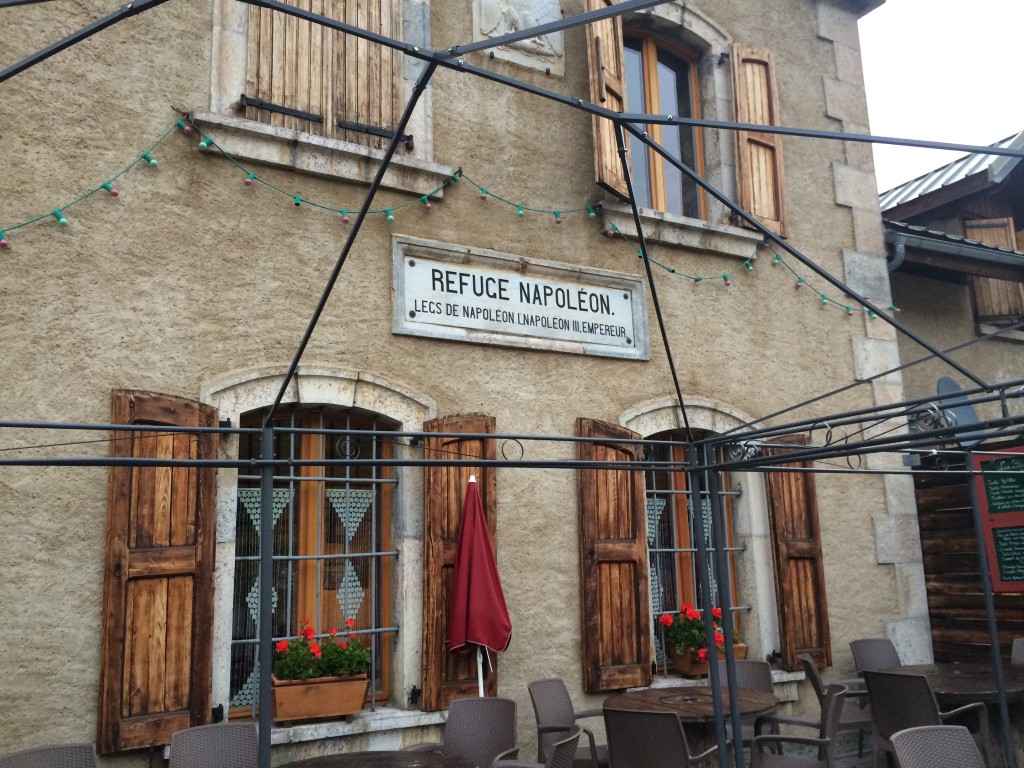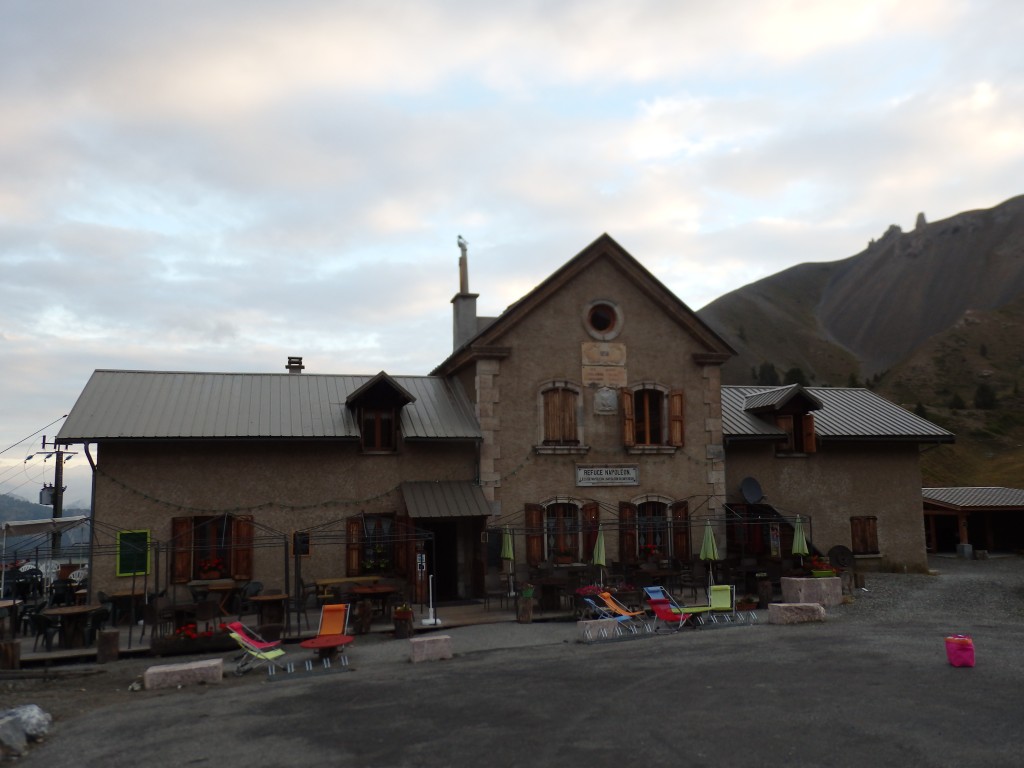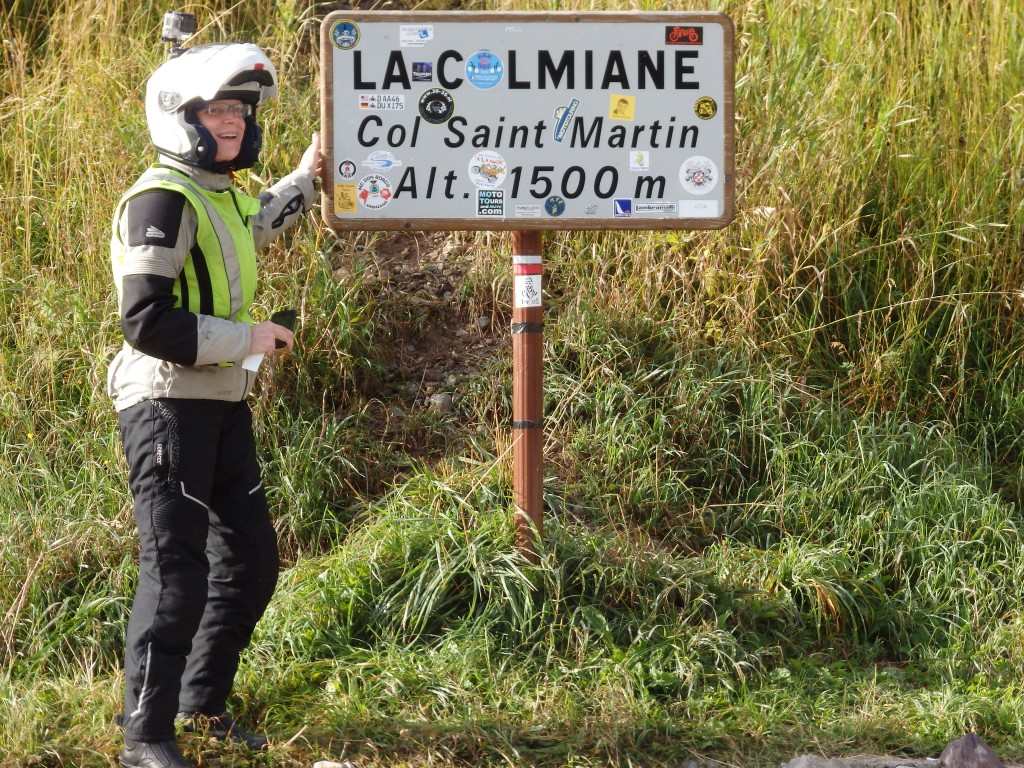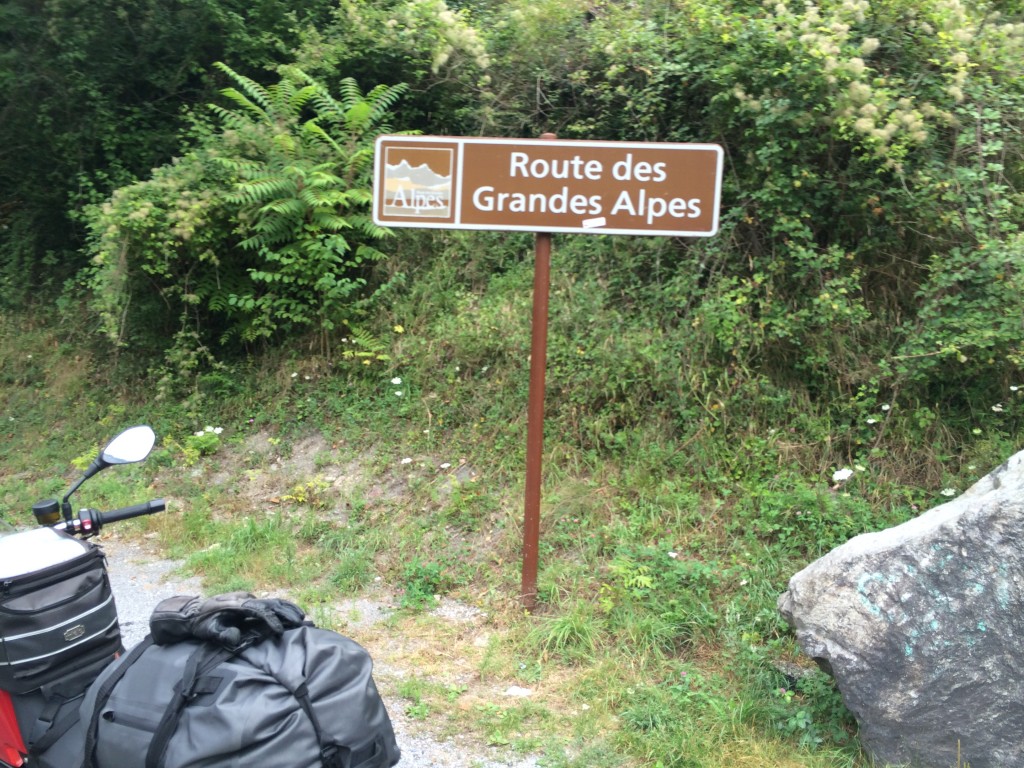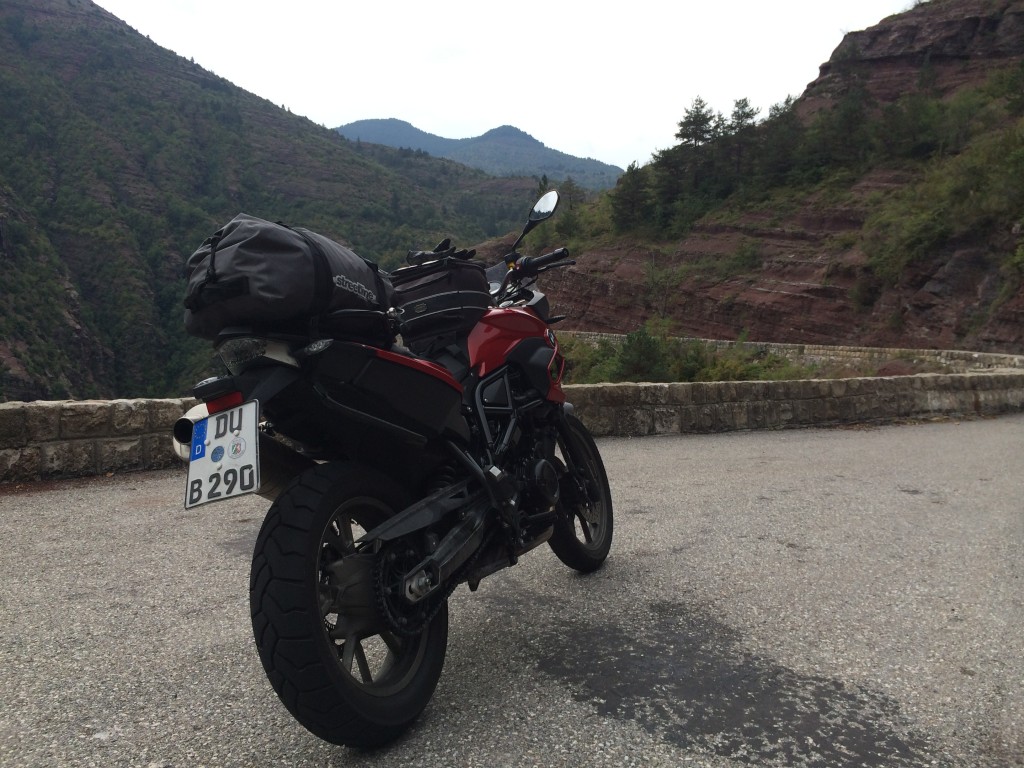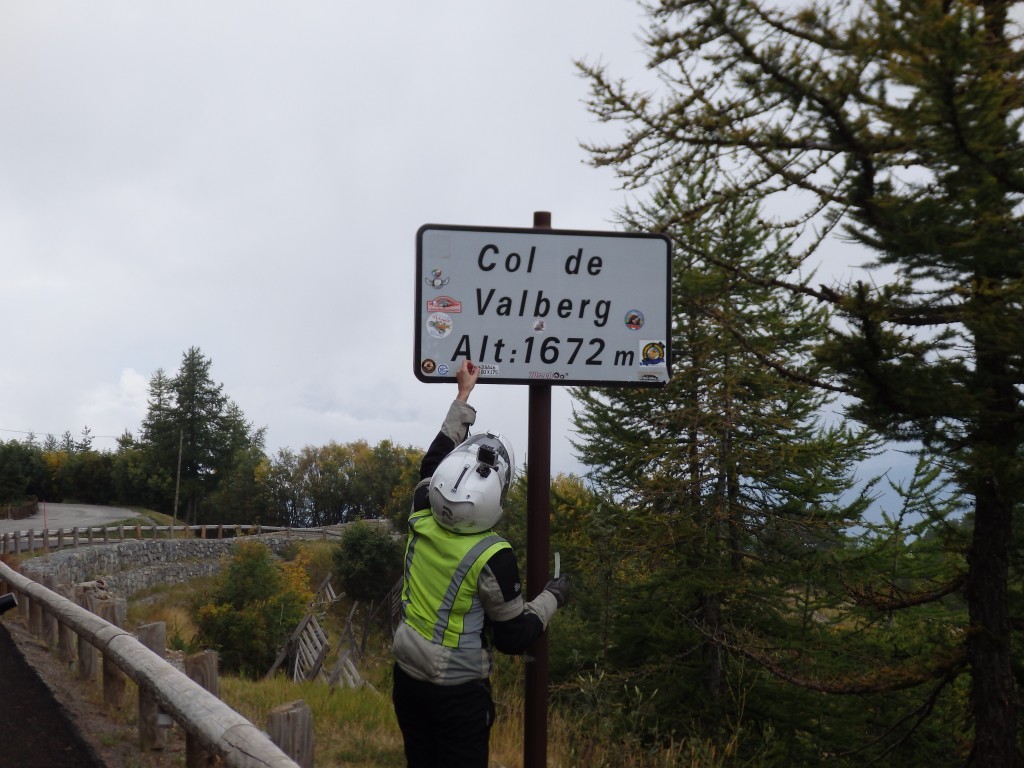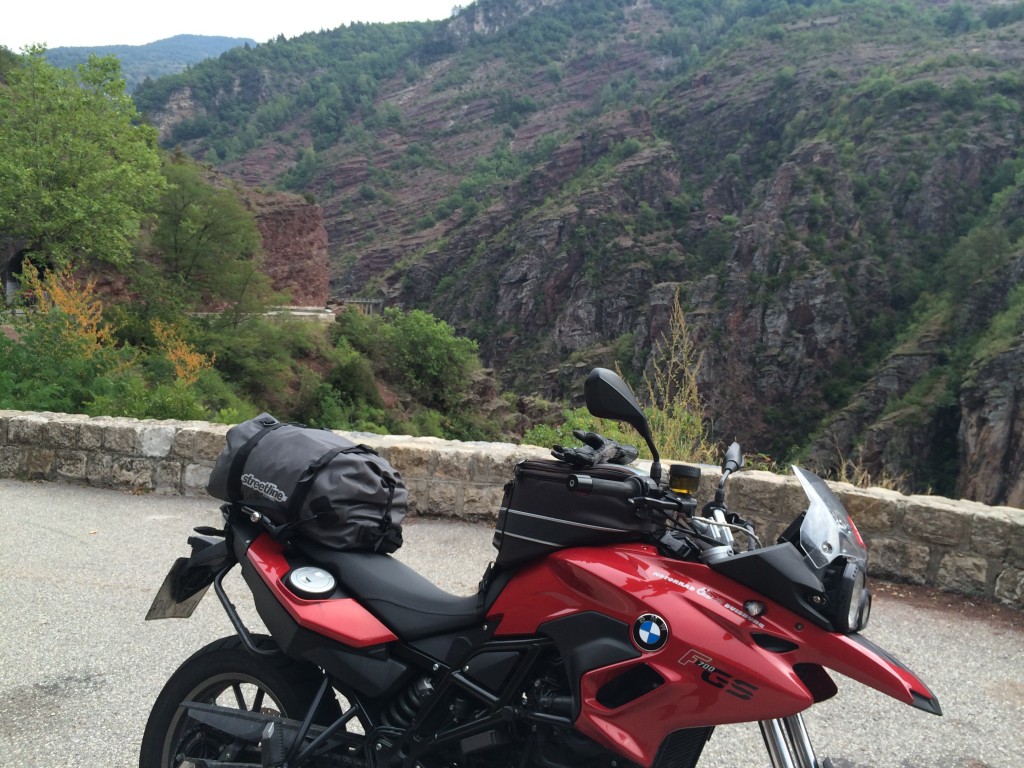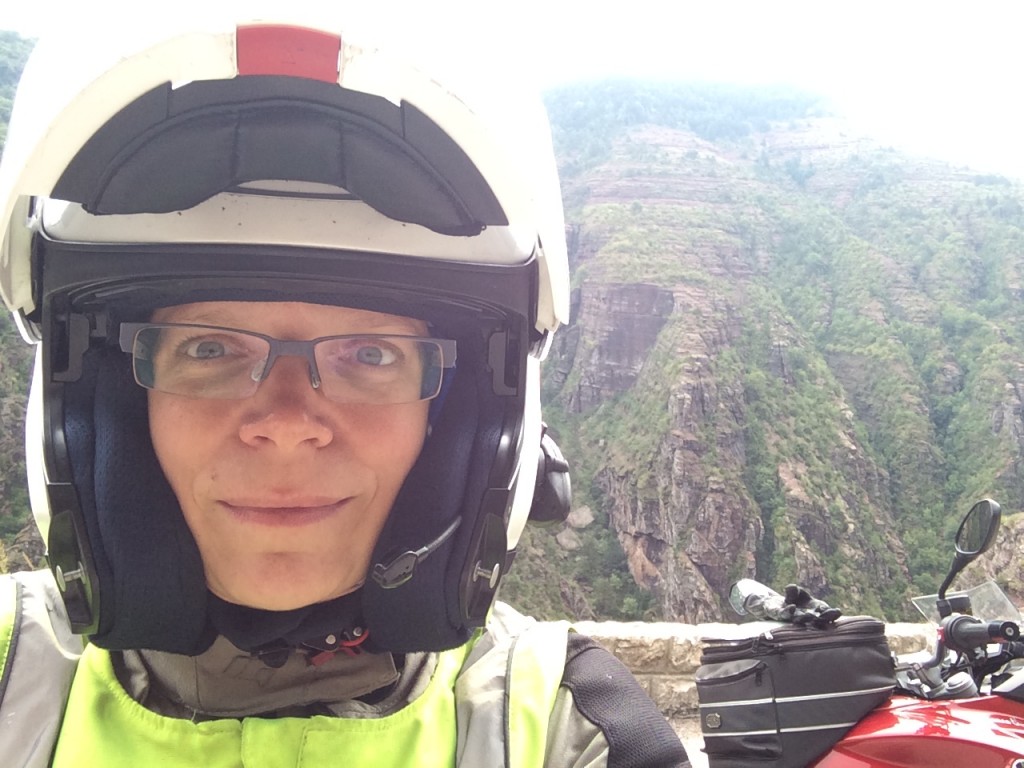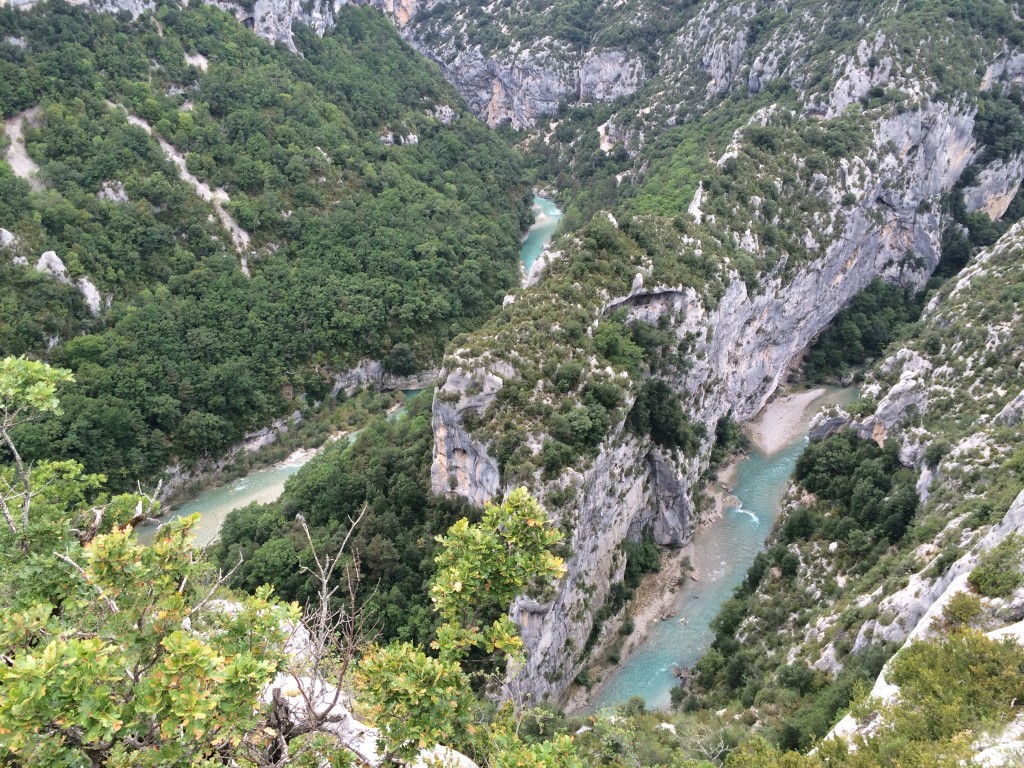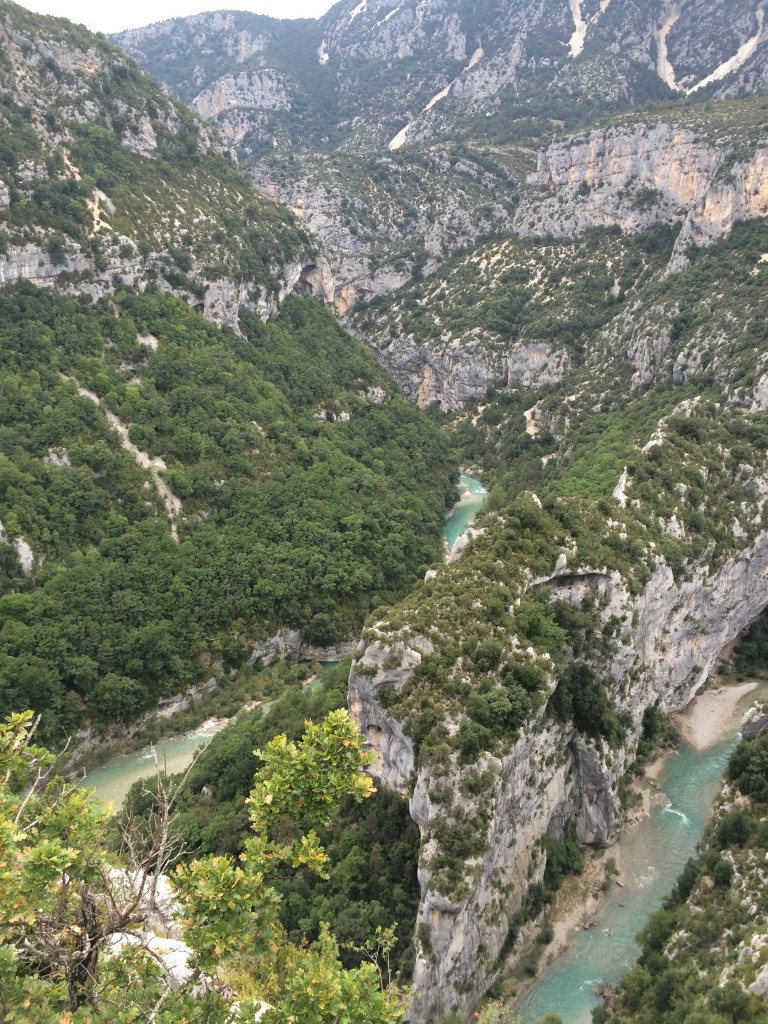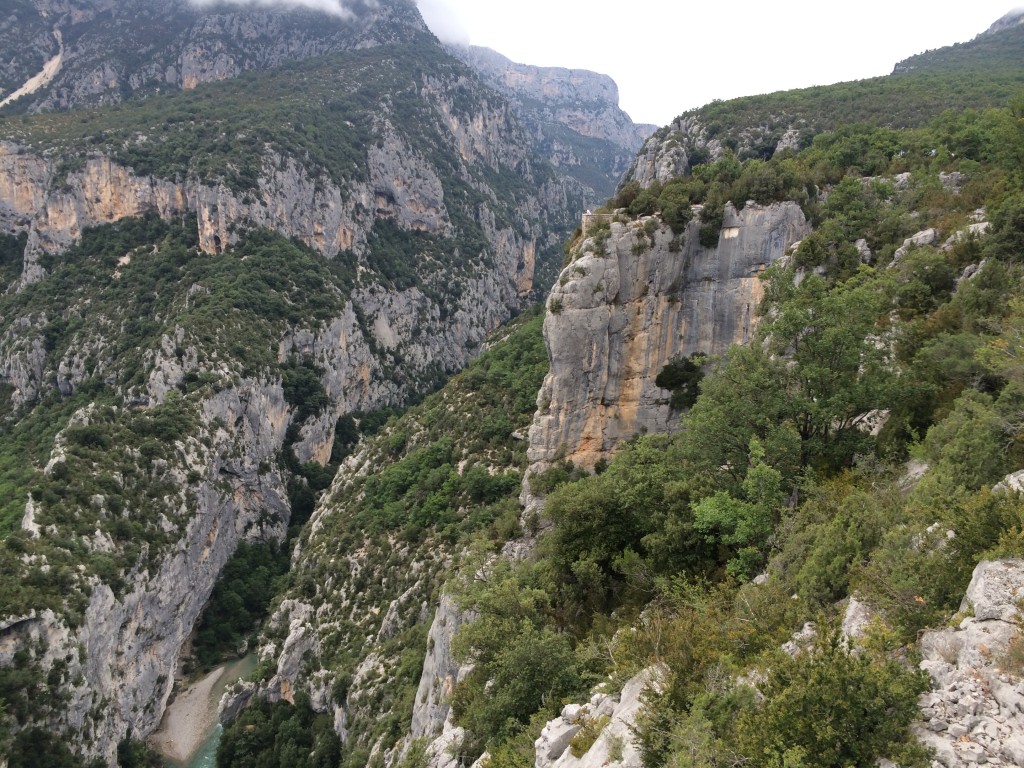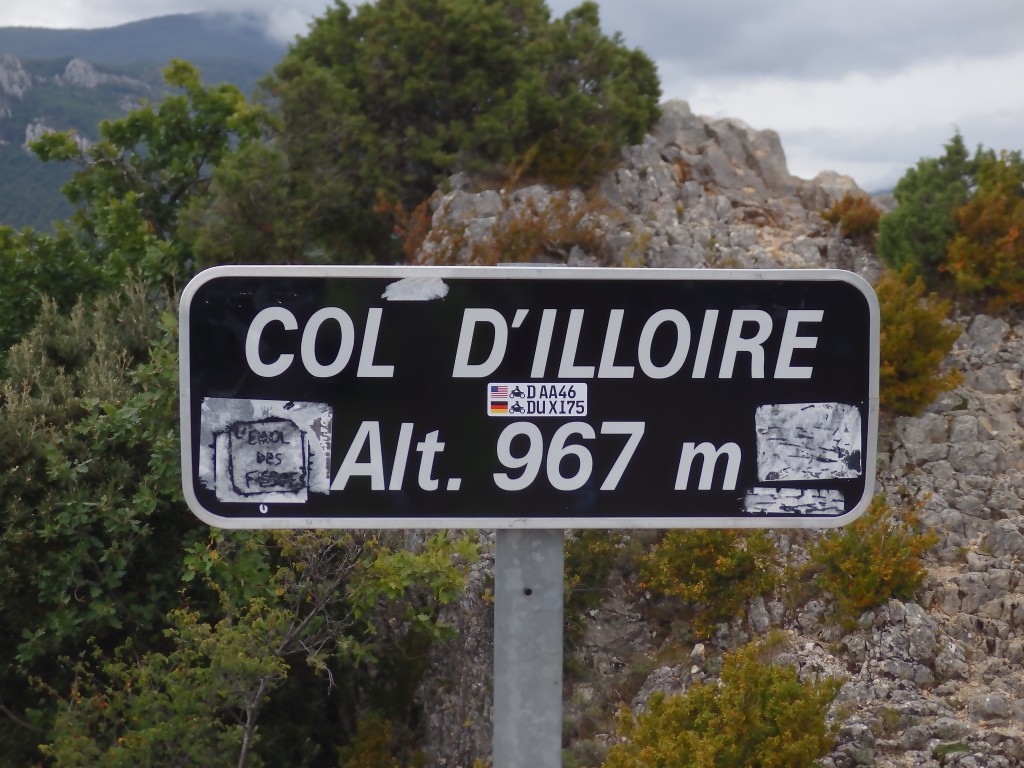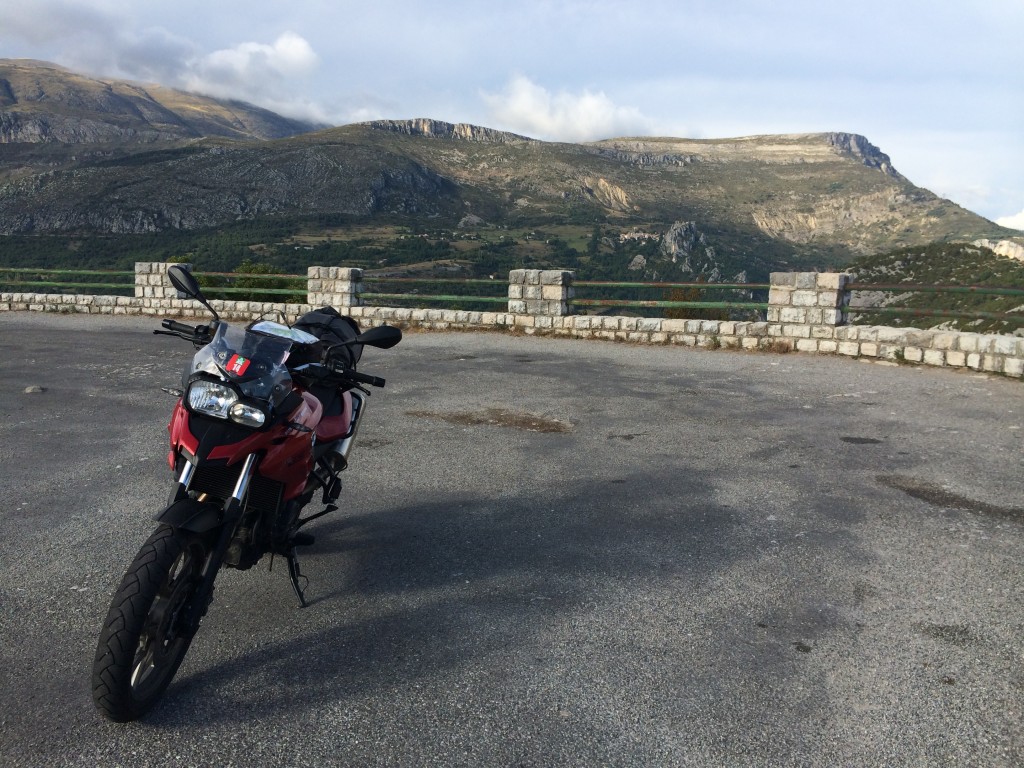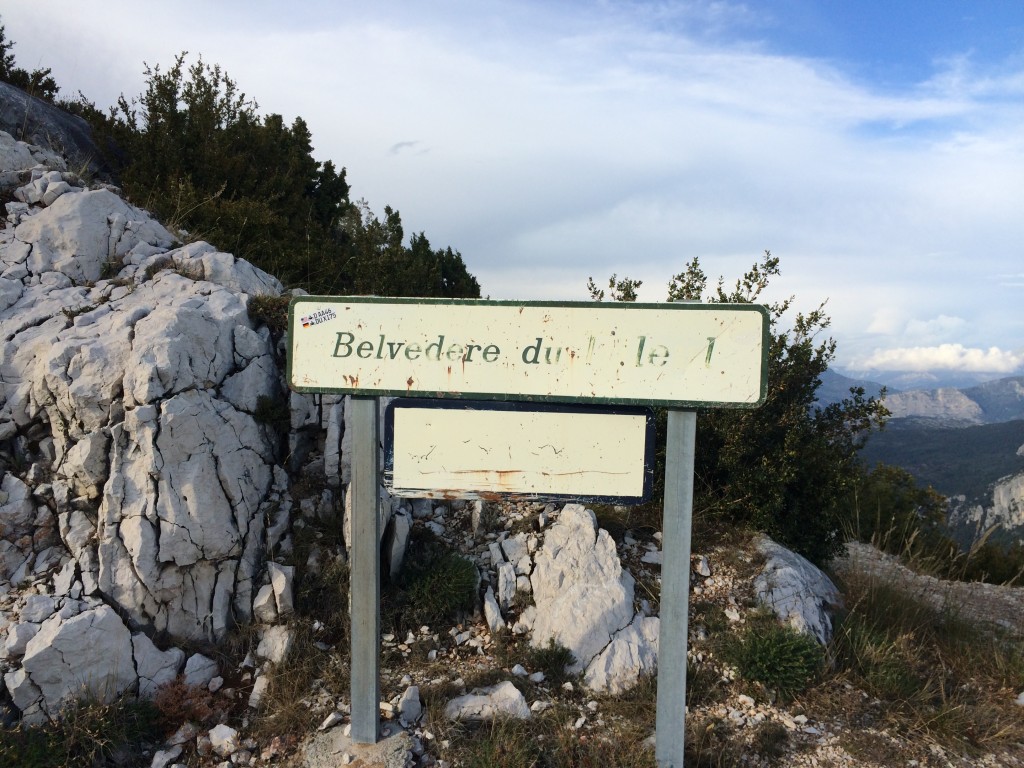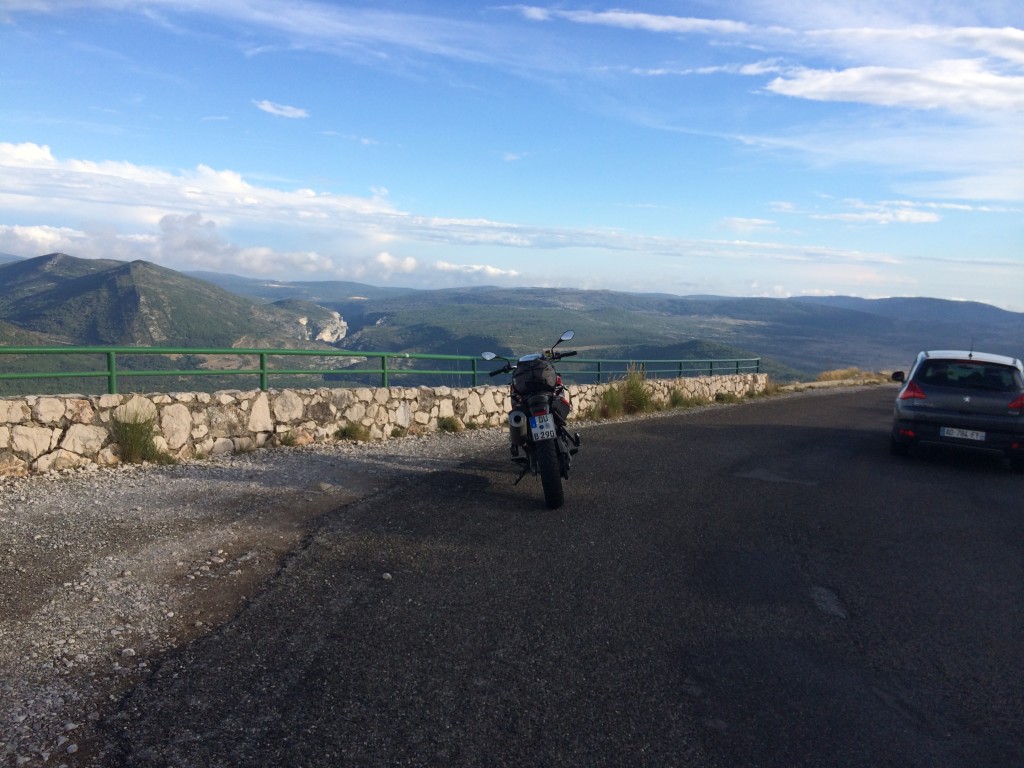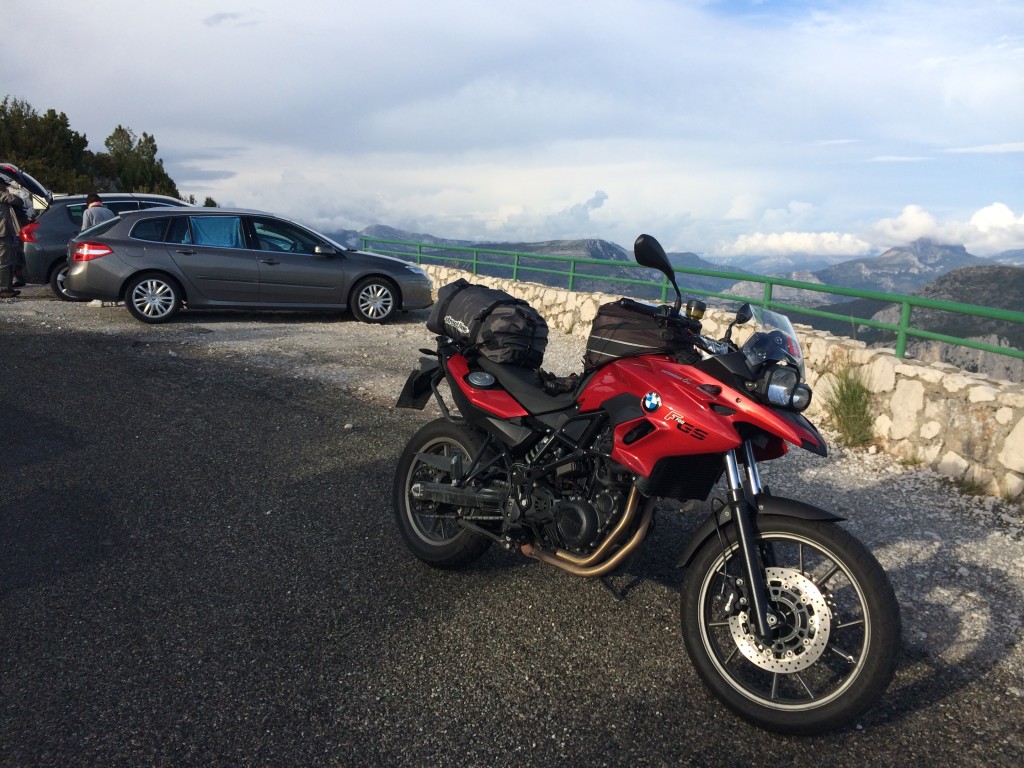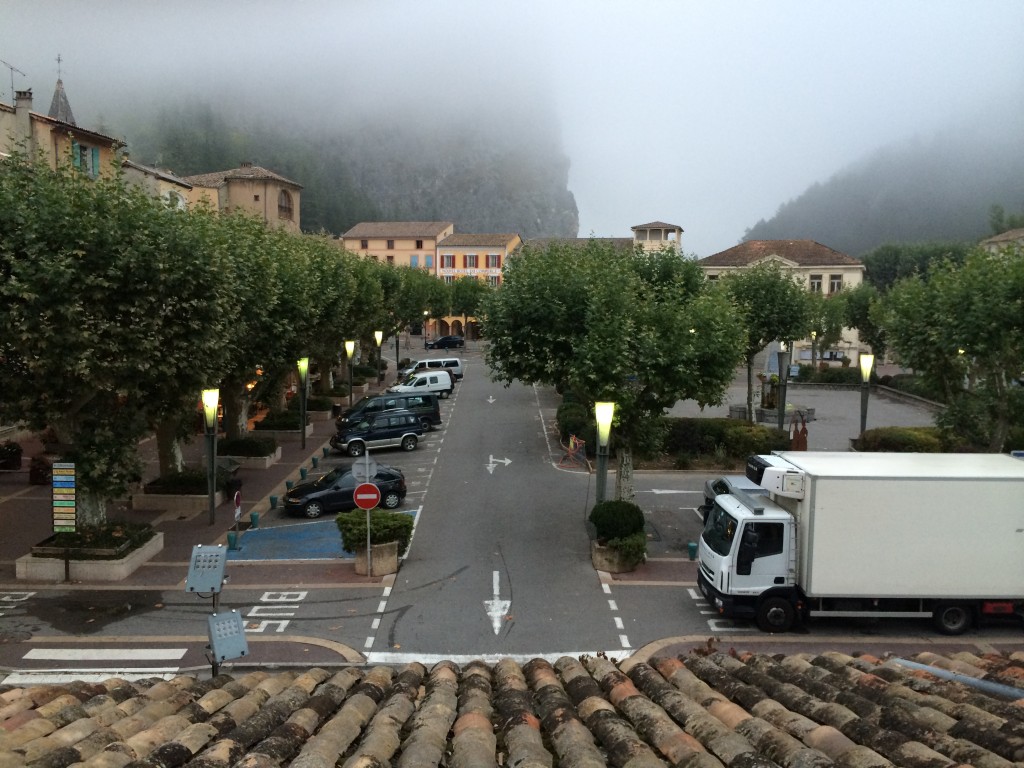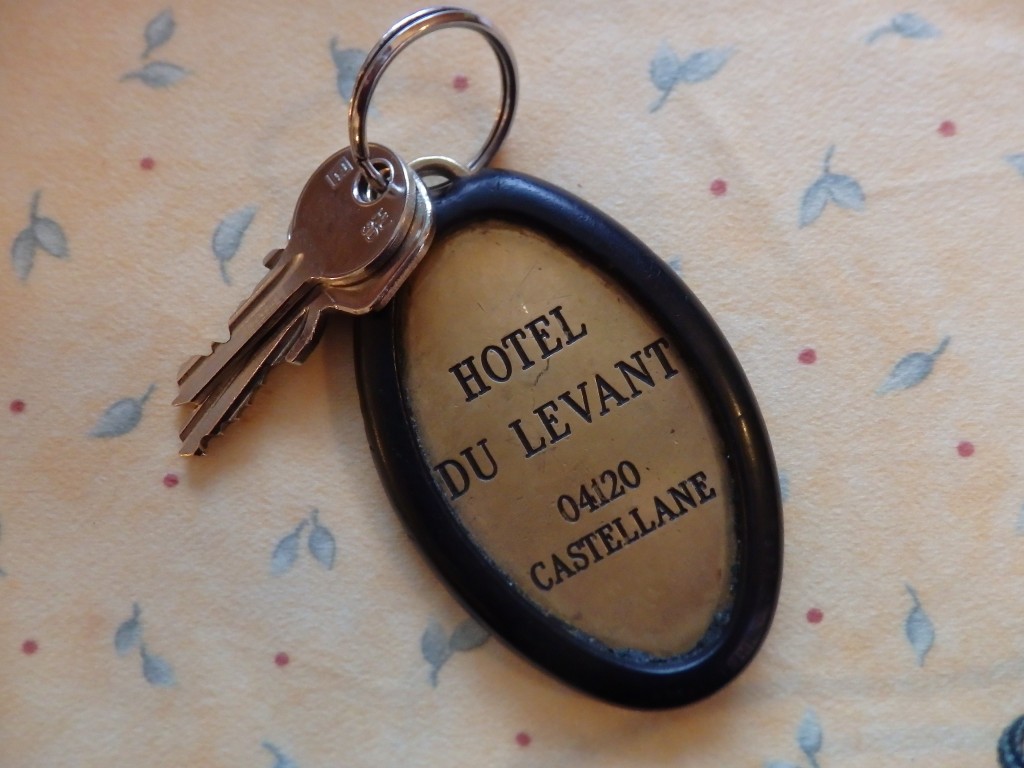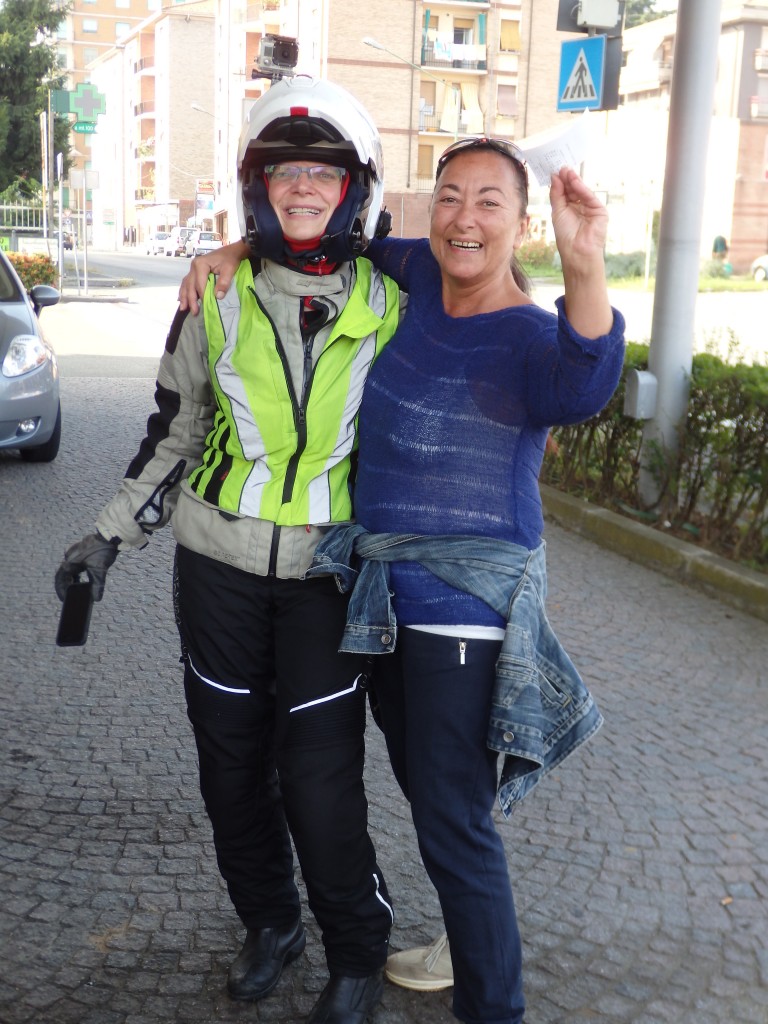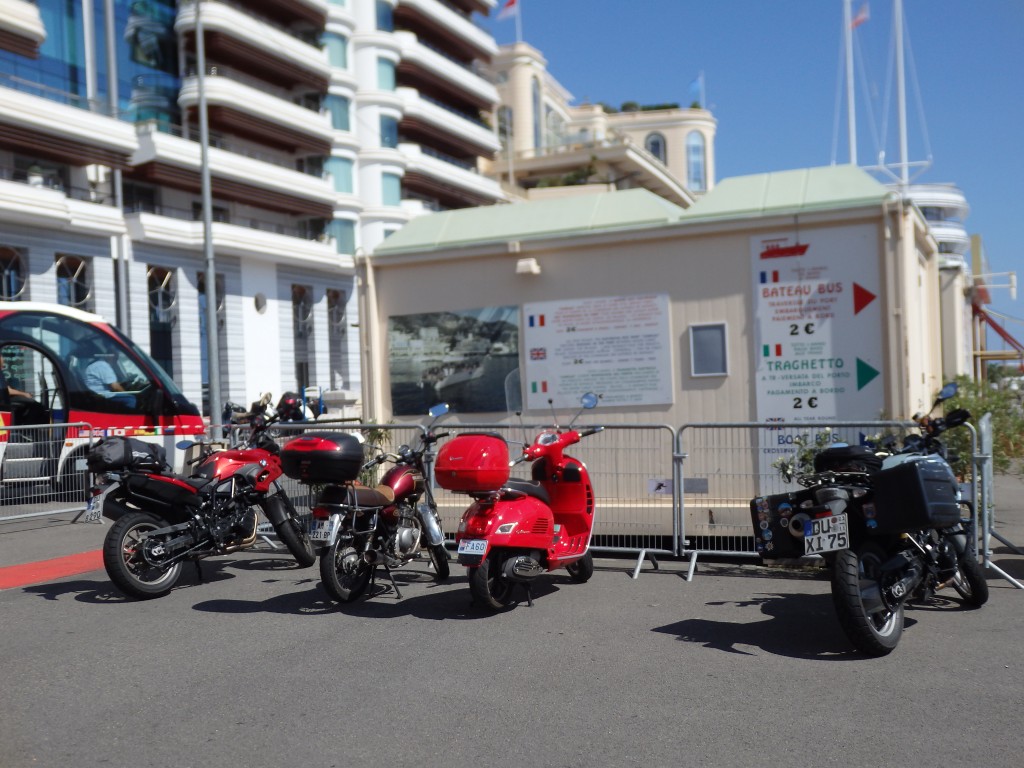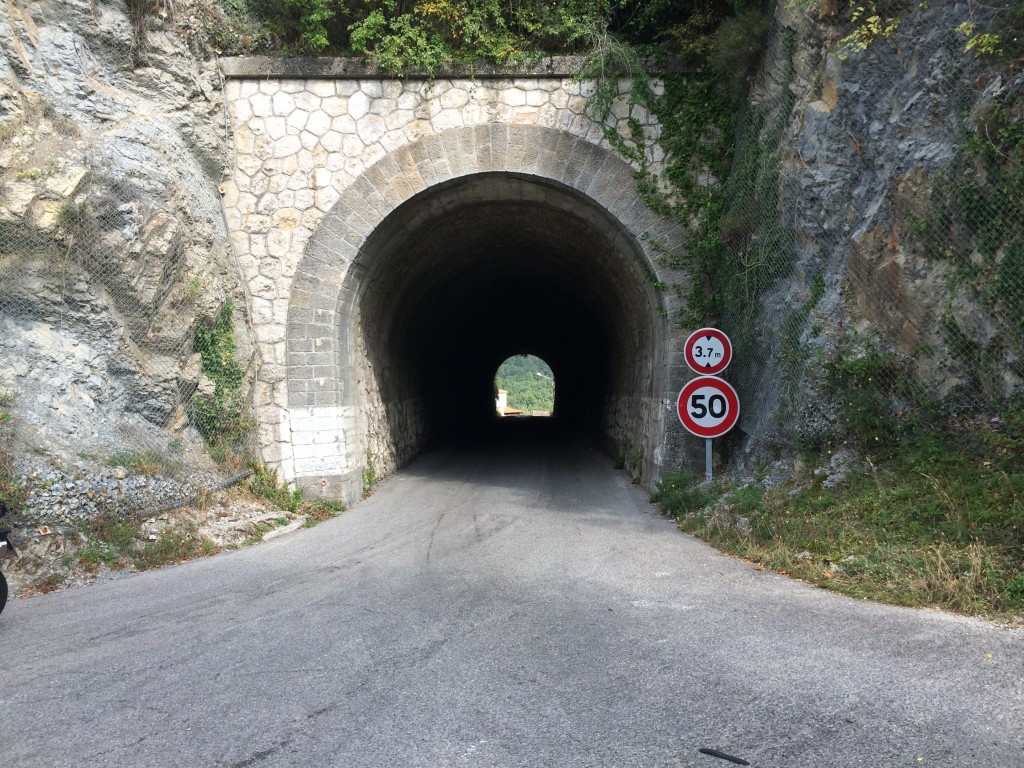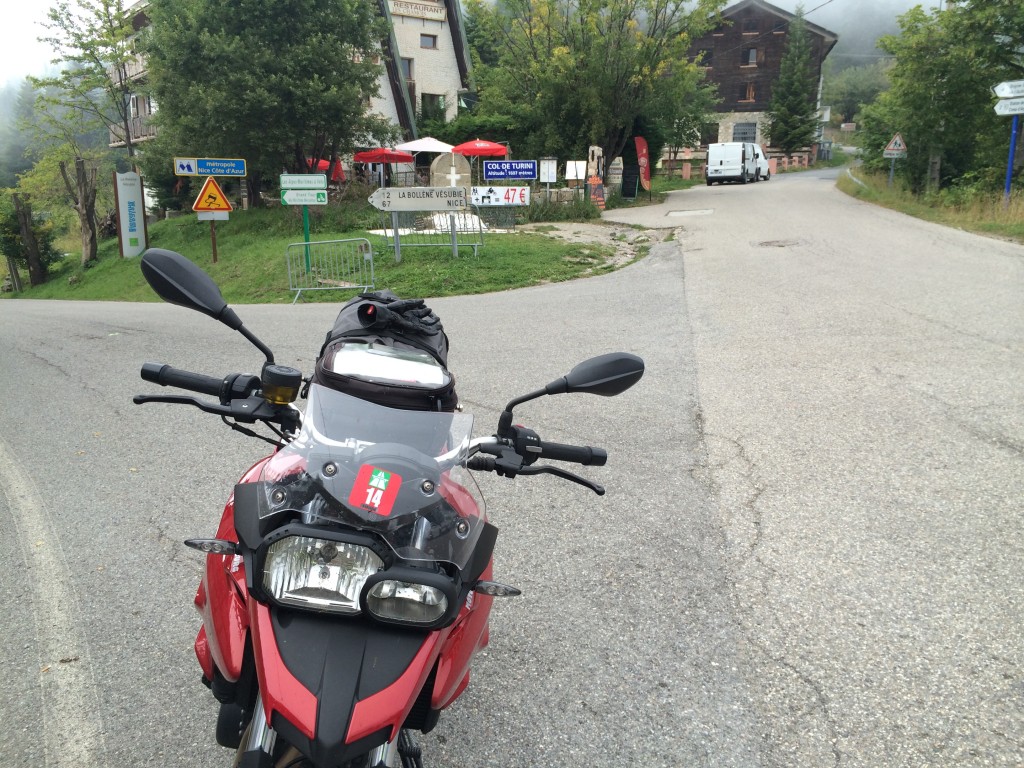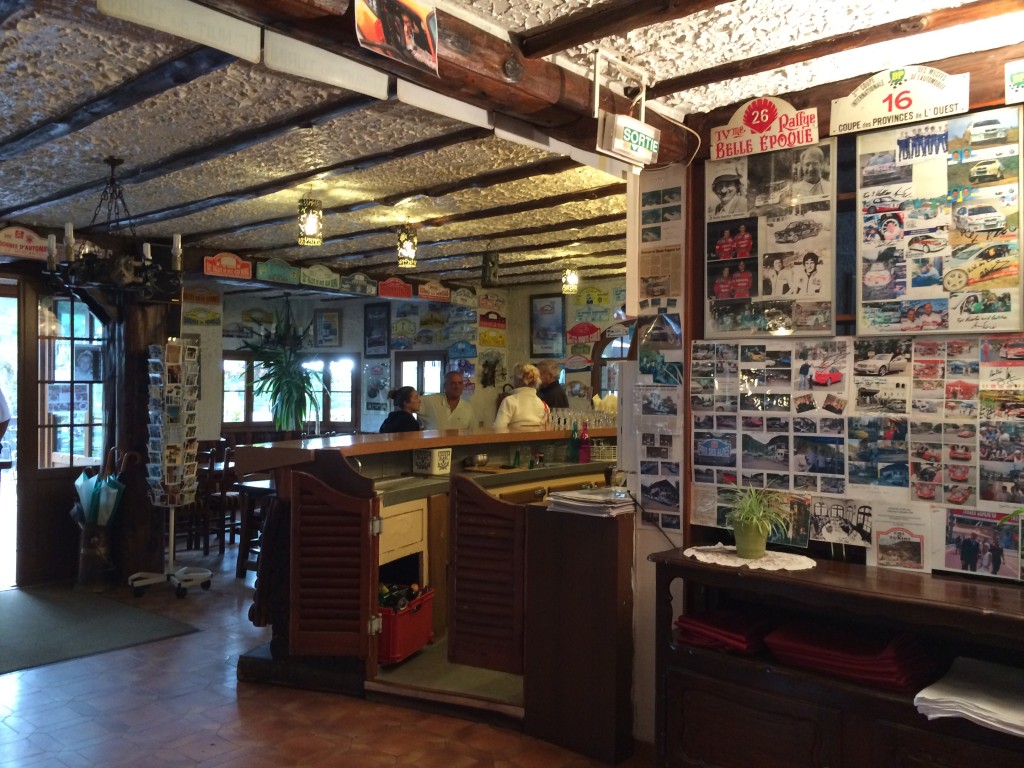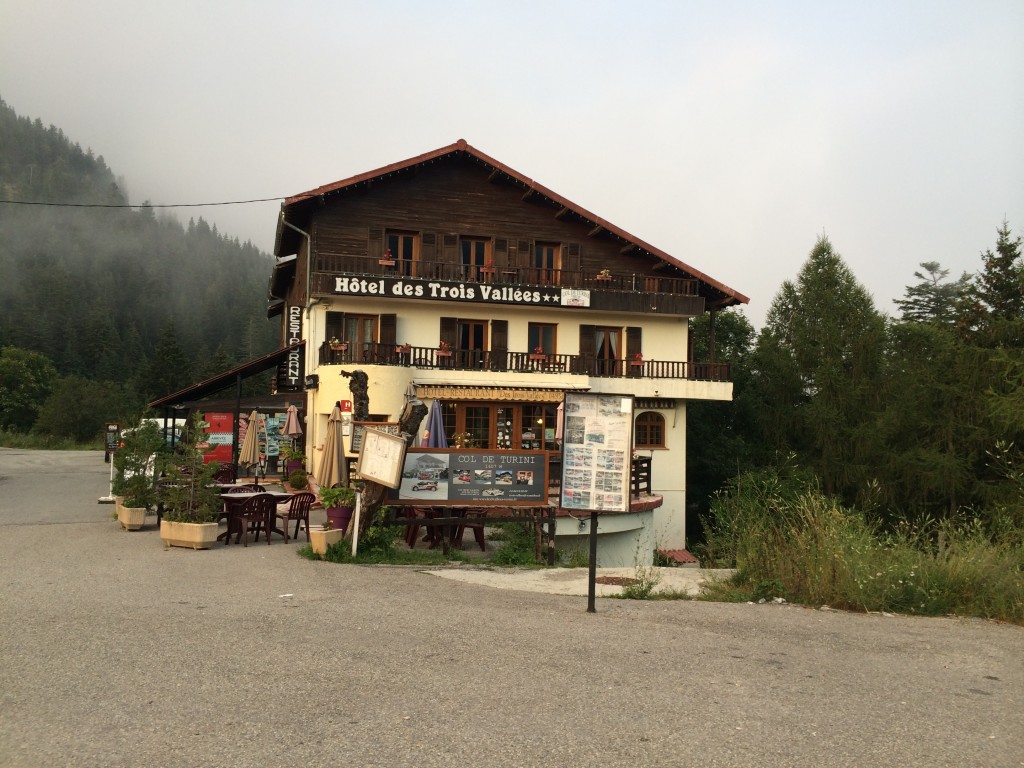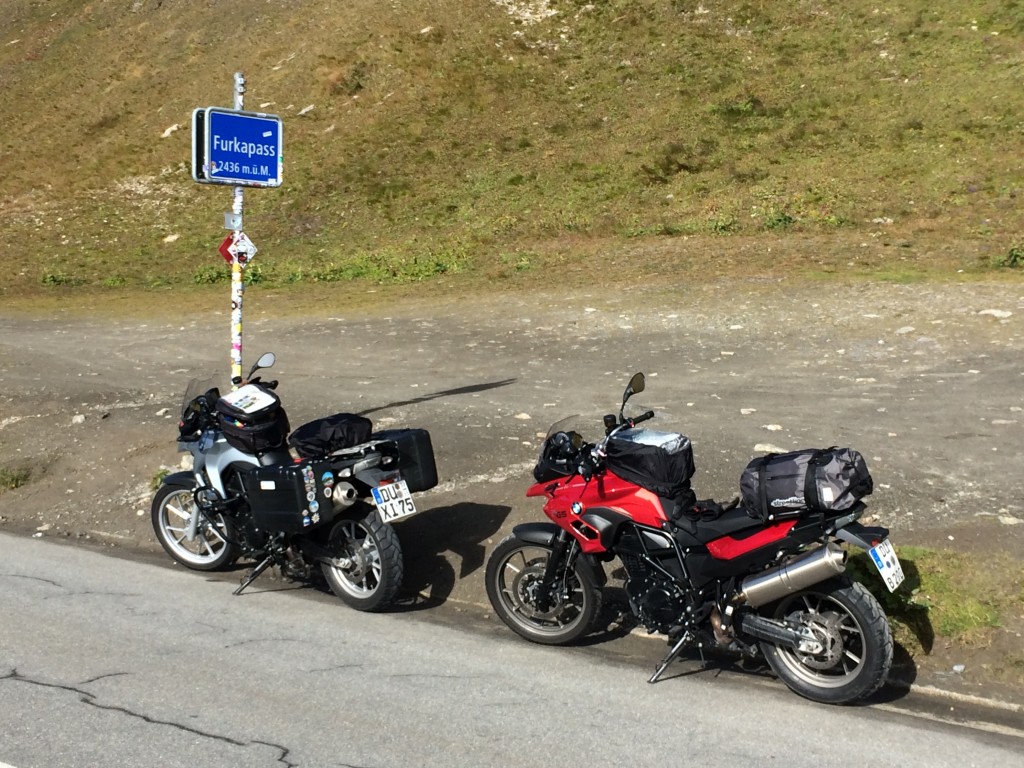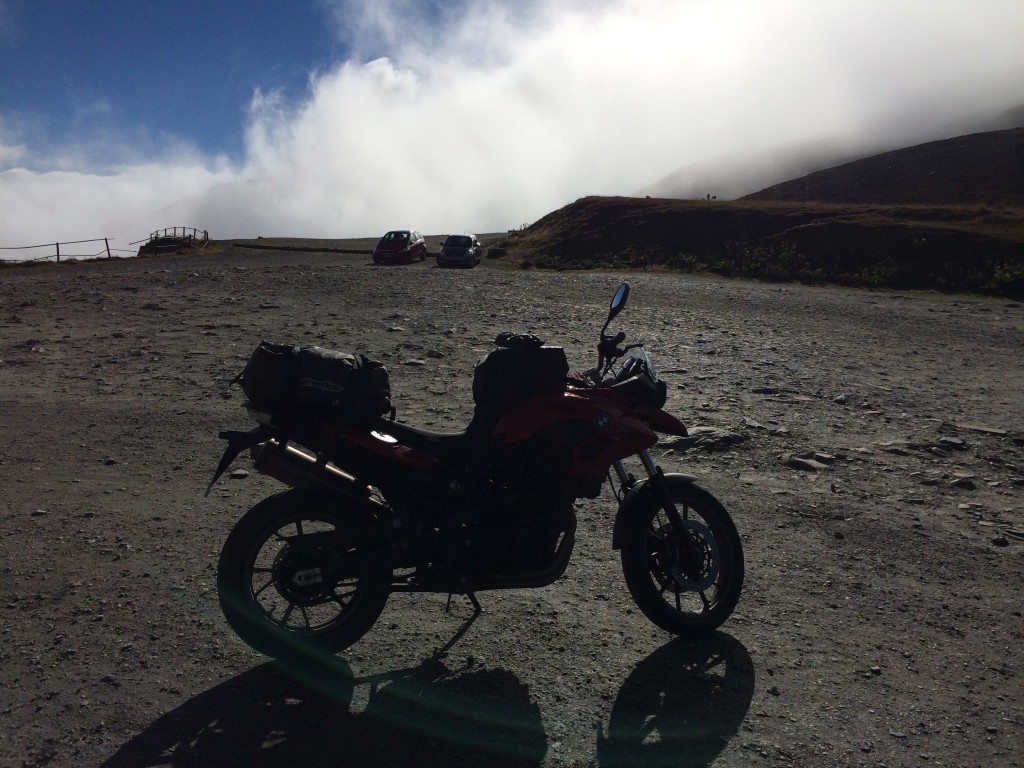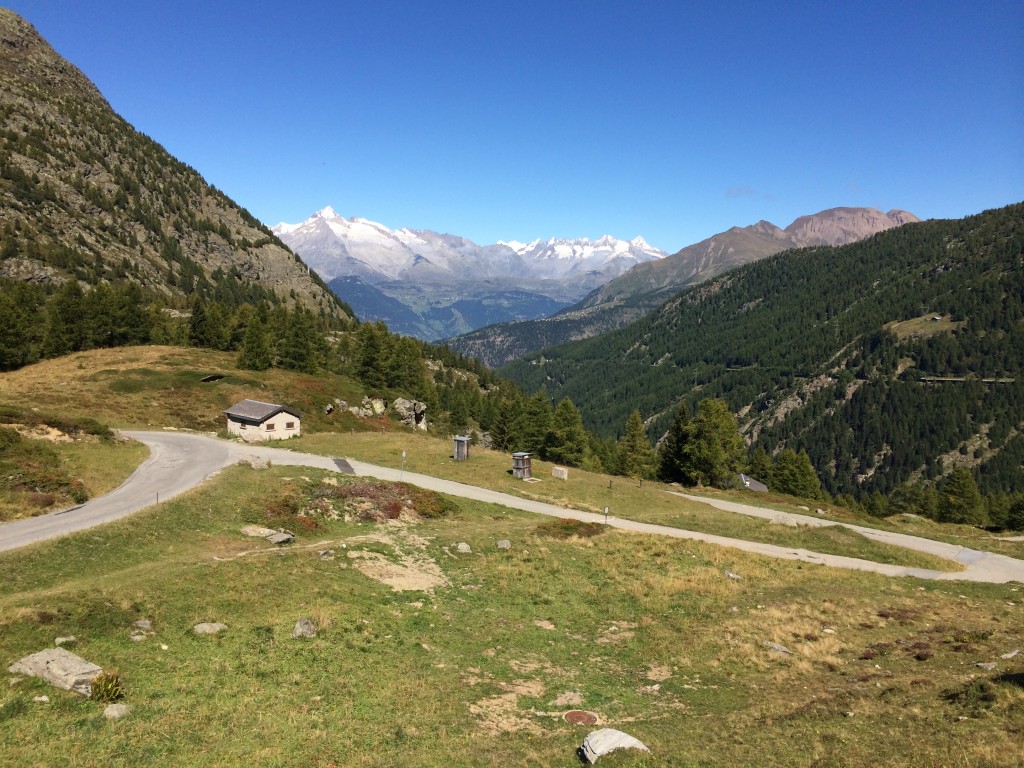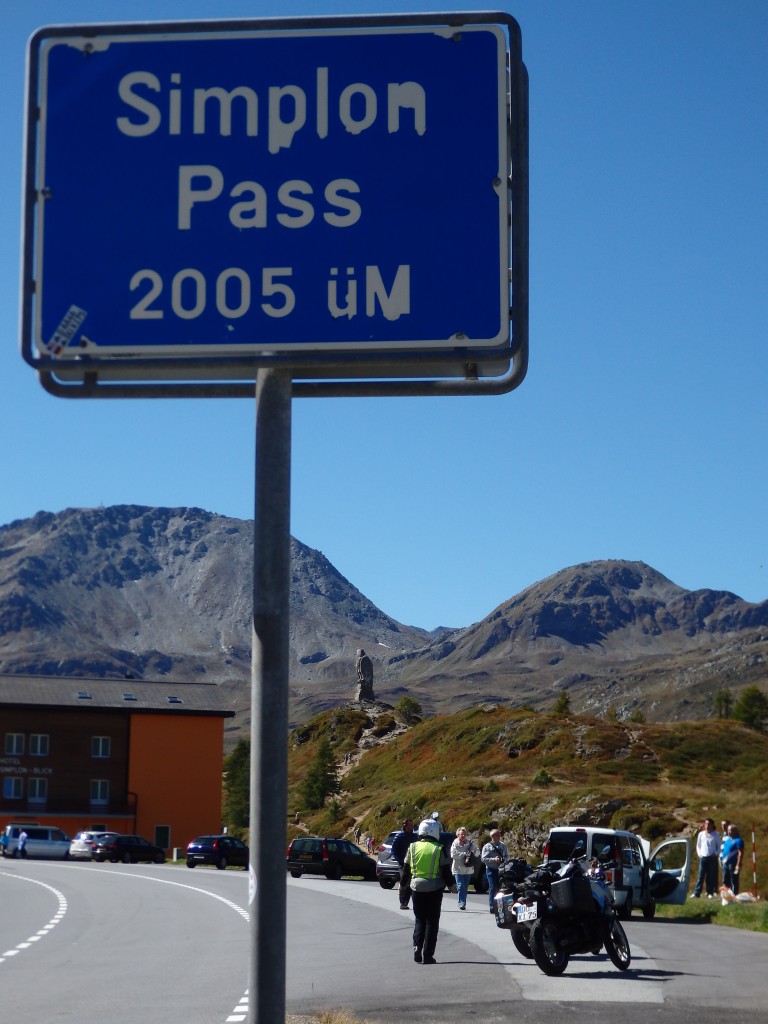This trip was taxing for me in a lot of ways.
While riding up the Aosta side of the Kleiner Sankt Bernhard pass on day 7, I got lost in situational analysis of the personal stress I was under and grabbed a handful of front brake (likely while rolling on a bit of throttle) in the wrong spot coming up a steep and dirty righthanded hairpin at low speed. I tucked the front end and went down on my right side at very low speed. The most n00b of riding mistakes. The feeling of the rear end sliding out under power was new to me – I’m no stranger to the rear end getting wiggly, but on my old F, the Tourances hook back up and I go along my merry way. Or is it that I am in the ride and it’s not the tyres at all, but the rider who is coaxing the rear end back under and letting the front lead? I don’t know. One thing I did note upon getting back onto my old F is that my brakes are much more consistent than the rental bike’s were. I can’t say for sure that this contributed, but I do know that it could have. Regardless, rider error is rider error.
The F700GS is, in general, a good bike. I liked the wider powerband, but did not like the twitchier throttle. Twitchy is a matter of perspective – as my F is a single (every bike I’ve ever owned has been a single), everything is twitchy to me. I noticed it more when I was tired than not, so it was a combination of bike and rider. Given the large sections of Autobahn transit on this trip, the extra ponies were quite welcome. I am not so convinced that an F800GS is my dream bike anymore, though. I did not fall in love with the twin the way I expected to. I think the tyres compounded the situation – I wanted a more dirt-friendly tyre and one that did not require so much care to avoid mud and cow dung. I was repeatedly surprised by how the handling changed as it rained. The BattleWings were/are simply more at home on dry pavement that wet or loose stuff. The feeling of a tyre just spinning against the asphalt is not entirely pleasant when you want it to be hooking up. The lack of handguards was quite noticeable with all of the rain we encountered.
The stock seat was miserable. Switching to the low seat would have helped my butt but put more bend into my knees. This would not have been good on the longer days. The narrowness of the seat was cool, it allowed a different kind of interaction with the bike chassis than I have on my single. I think I made the right choice to use the stock height seat – it certainly made it clear to me (again) that my F is too low and that I can handle a full-sized bike without any issues. The seat height had no impact on my drop – it was pure rider error and there was nowhere to put a foot or knee down anyway.
Getting sick was also not in the plan. While recovering, I spent some time reading up on the internet about stress responses and learned about the adrenaline/cortisol loop and its impact on gut motility. This is exactly what happened to me and why the rösti was such a disaster. For several days beforehand, my gut was basically shut down, and then I tried to stuff it full of difficult-to-digest material that needed to move. Talk about compounding the problem. I know better to keep an eye out now for both emotional stress and my body’s response to it. In the end, I wasn’t “sick” as in food poisoning, but sick as in not healthy. Interestingly enough, I did not trigger any Celiac responses during this trip. This is a huge positive as France is generally a nightmare for Celiac people. The irony of my gut being the “BMW” of the trip – miscellaneous system-wide shutdowns, refusal to cooperate, lack of proper documentation, design flaws, issues with engineering tolerances, etc. – was not lost on me.
The route was solid. Once again, all of the hours of planning and routing paid off serious dividends. I would like to go back and ride the French portion again (alone, or with a more like-minded riding partner) and explore the side passes that we skipped. I would also like to do it on a smaller bike – perhaps a DRZ – definitely something in the 400cc range. More luggage would be nice, too. And a rental from a shop closer to the destination. Pass-bagging remains a great focus for a trip for me. GPX files will follow shortly, once I get them edited.
My Garmin issues were just embarrassing. For someone who is six layers deep in contingency planning, I miffed the top layer. Thankfully, my backups worked. The sectional overview printouts were a tripsaver when combined with additional information from the large Freytag map. I did eventually sort out the power port issue – the clip inside of the power port on the bike was the problem – it was not contacting the center pin of the adapter cable. I finally figured this out and fixed it just before turning in the bike. My poor old Garmin is actually just fine. For now, at least.
The idea of finding GS Land did not enter my mind until I was riding the Route des Cretes. It stayed in my head for the remainder of the trip.
My packing was not only sufficient, it was great. I took four sets of Maier polyester sport liners (Galeria Kaufhof), six pair of assorted L/R ski socks, plenty of clean underwear (Hunkemöller edgeless), three Champion C9 wicking tshirts (Target), one Craft mesh base layer tshirt, one fleece pullover (Cabela’s), one fleece jacket (Target Merona), one pair of jeans (Silver), one nice button shirt (OCK), one pair of sneakers, a couple of bras, and a pair of Umbro shorts. I will expand my collection of the C9 wicking t’s – the closer-fitting ones are perfect under the sport liners and like the liners can be washed and dried at room temperature overnight. The ski socks presented a drying problem which I resolved by strapping them to the outside of my drybag (look carefully at the day 5 pics) and letting the sun work its magic. I did not need my neoprene vest – it never got that cold.
The drybag was somewhat cumbersome and I definitely prefer side cases, but it was functional and worked great as a drying rack. If this is the only option, it’s not a bad one. It’s just not the best one. My tank bag fix worked well, too. I sewed a strap using plastic quick connect fittings that I got at the fabric store. I put matching fittings on to the existing straps on the tank bag and ran the new strap under the bike seat mounting points. This made for quick on and off and allowed me to snug it up neatly. By arranging the fittings properly, I could connect one end of the bike side strap to the other to leave it neatly stowed when the bag was not on the bike. I admit that I got this idea from the bag itself – the safety strap works that way so that it can be safely left on the bike and easily accessed rather than falling into the steering head each time the bag is removed. I also used this technique when making the tank bag for my Super Sherpa. I will likely transfer the new lower strap to my old F if I can make it work.
My tools were insufficient, I need to plan better for future longer-term rentals and make sure that I have more of the basics. The T45 would have saved me the visit to Alpes Moto Cycles at a minimum.
My ADAC membership paid for itself again. It was profoundly simple – I called and explained that the bike was rideable but needed to be checked, could they find me a shop that would be open for a few hours. Within 30 minutes, they had a shop and contact info for me. This basically saved my trip for me. Die gelbe Engeln retten! The yellow angels save the day! Even in the call center. I can’t wait to try this out in the US some time…..
I noticed that I am developing my style as a ride leader. I identified three topics that are important to me. First, routing awareness. All riders need to be on the same route, and even better if all nav systems are the same make so that gpx files are processed in the same manner. Second, inter-group communication underway. I often could not see my riding partner as she preferred to ride about 500m back and this significantly compromised communication. Third, respect for riding style. In technical sections, individual riding styles dominate, and I am happy to let this play out as needed – faster peeps first, leaf peepers later, please. I also learned that I am most at home in the twisties, as opposed to the hairpins. I like the hairpins, but I do not enter flow in them. They are work and I need more of my brain engaged to make them fun. In the twisties, I can enter and exit flow at will with gentle transitions. This is what riding is about for me. It is consistent with my love for track work – controlled situations with known elements that can be played with at will. I need to do more track work.
Costs for the trip were somewhat higher than last year – roughly 120€ per day in food, lodging, souvenirs, and fuel. This was expected and due to the locations – basically the finest and best-known Alpine ski regions – along with Provence and Cote d’Azur. It was worth it, we were able to find inexpensive lodging without much trouble at all. The rental and extra kms were about 980€, with repair parts on top of that. I used Delta miles for my airfare and paid about $200 in taxes and fees. I flew in four days early and stayed two days later, working at my employer’s HQ office during those days and getting a head start on acclimating to the time zone. This worked out very well and I am grateful to my boss for supporting me on this aspect.
This was my third long trip with one or two more people in close quarters. From the three trips, I have learned that I am good with other humans for about seven days. In all three cases, the eighth day was the tipping point for me mentally, regardless of the level of personal stress I was under. In the future, I will limit co-trips to seven days. Maybe with some alone travel up front.
In sum, it was not as bad of a trip as it could have been, but not as good as it could have been, either. The do-over is going to rock.

